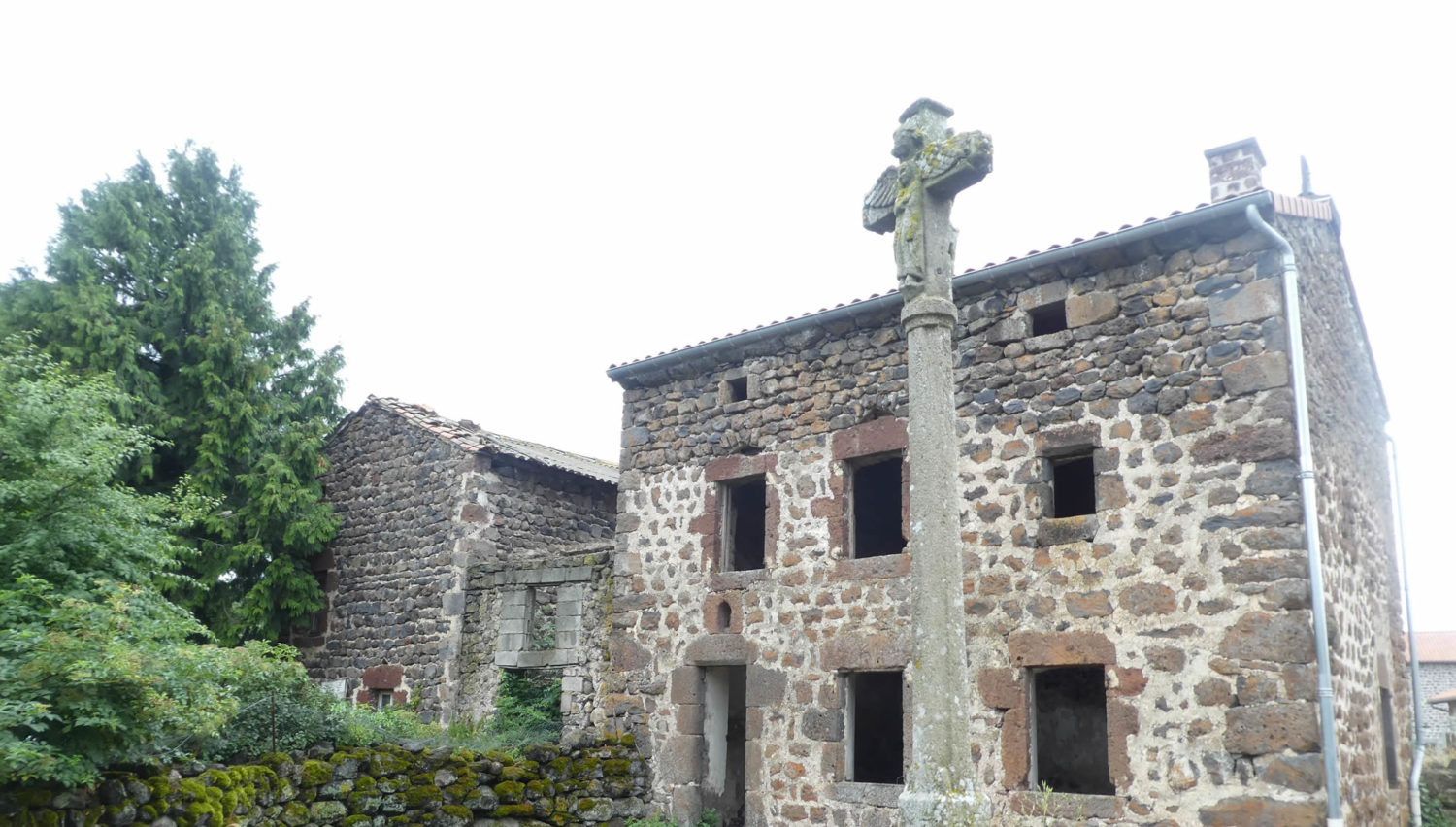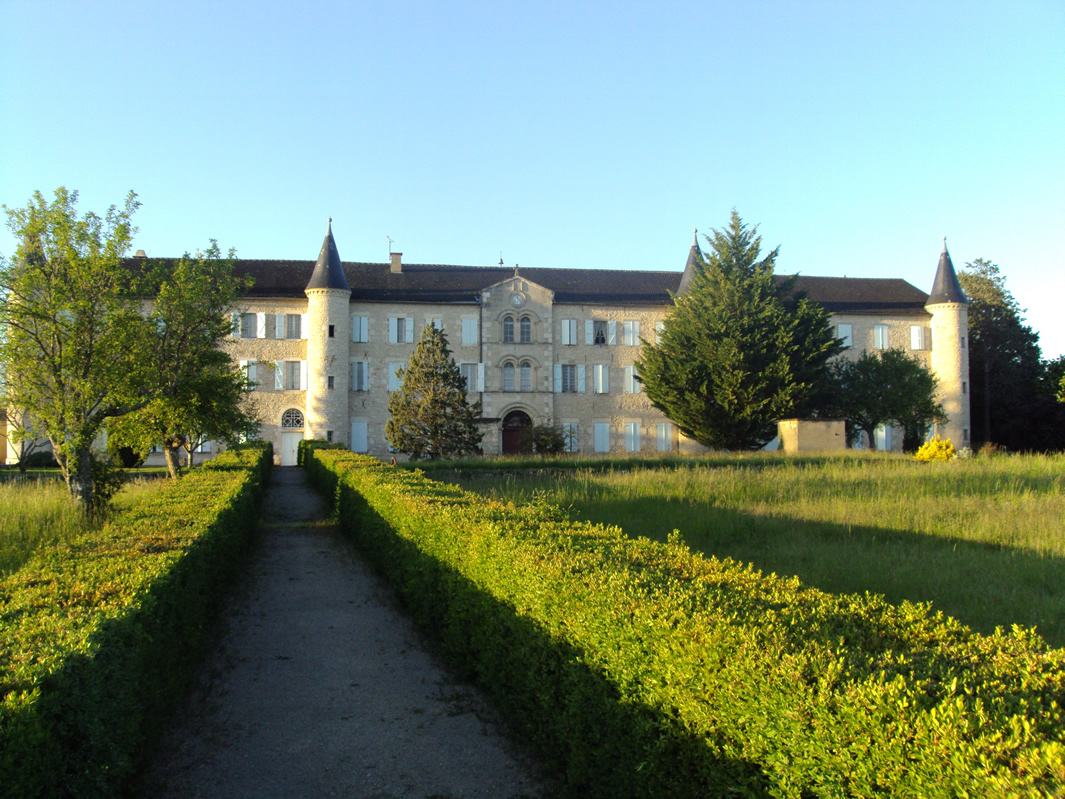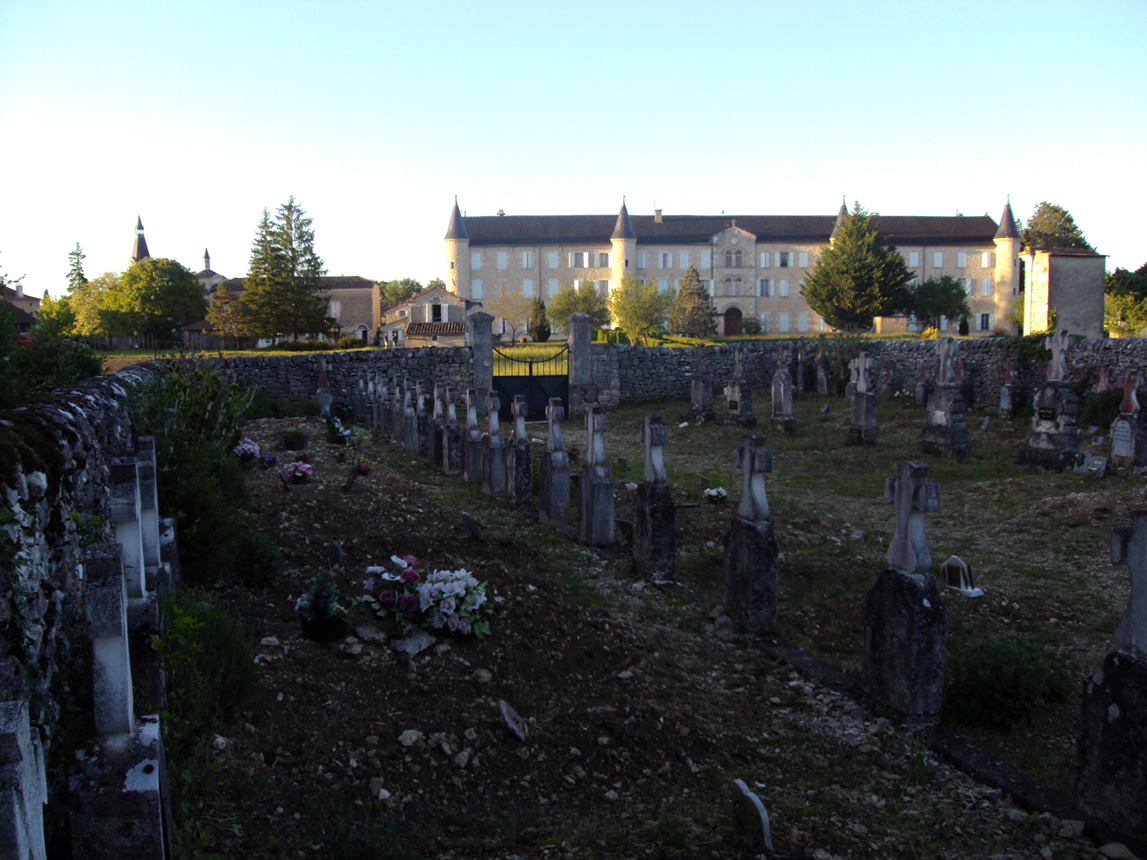The serenity of a convent nestled in the middle of the Causse
DIDIER HEUMANN, MILENA DALLA PIAZZA, ANDREAS PAPASAVVAS
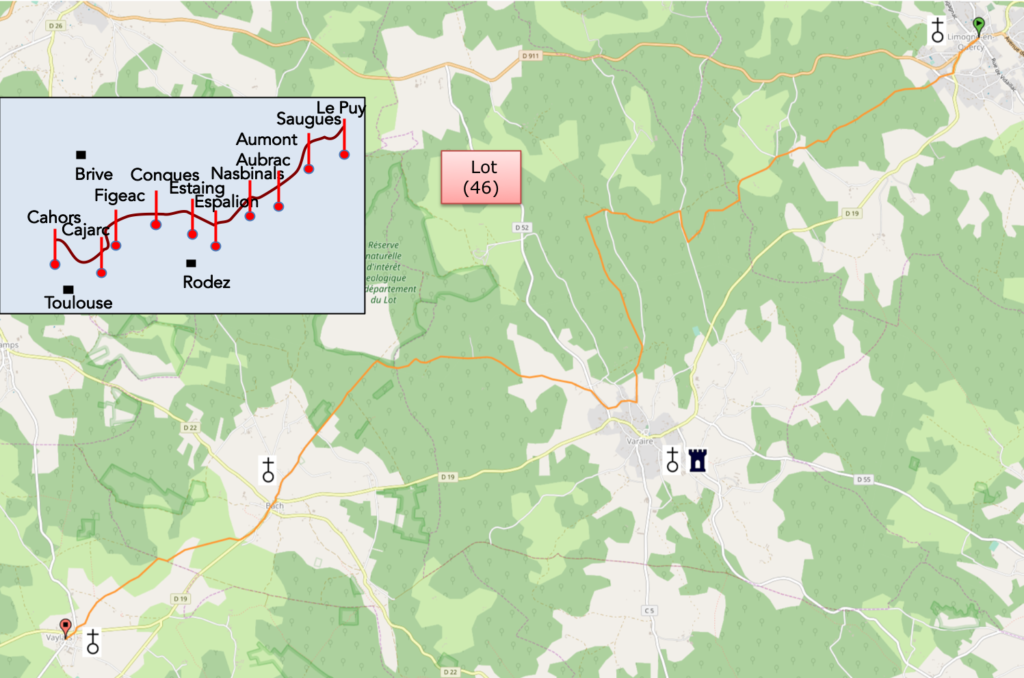
We divided the course into several sections to make it easier to see. For each section, the maps show the course, the slopes found on the course, and the state of the roads. The courses were drawn on the “Wikilocs” platform. Today, it is no longer necessary to walk around with detailed maps in your pocket or bag. If you have a mobile phone or tablet, you can easily follow routes live.
For this stage, here is the link:
https://fr.wikiloc.com/itineraires-randonnee/de-limogne-en-quercy-a-Vaylatsats-par-le-gr65-30233197
It is obviously not the case for all pilgrims to be comfortable with reading GPS and routes on a laptop, and there are still many places in France without an Internet connection. Therefore, you can find a book on Amazon that deals with this course. Click on the book title to open Amazon.
 |
The Camino de Santiago in France / V. From Puy-en-Velay to Cahors (Via Podiensis) on GR65 track |
If you only want to consult lodging of the stage, go directly to the bottom of the page.
Today’s stage always takes place in the Causse de Limogne, in the Causses du Quercy Regional Natural Park. You still travel under the dense oaks near the dry-stone walls at the edge of the tracks. Sometimes the pathways become stonier than before, as if you were gradually changing the geology of the soil. Here they call “grèzes or castines”, this limestone scree which clutter the bottoms of the dales.
Here again only the majesty of the causse, and just one large village, Varaire, which deserves a small detour of less than 300 meters off the GR65. The stage ends with the sisters in Vaylats. However, many pilgrims do not walk to Vaylats and stop at Bach to continue directly on the GR65. We can only encourage the detour to Vaylats for the charm and serenity of the convent of retired sisters, in Vaylats. Usually, pilgrims meet here, as they do in Conques among the Premonstratensians, although the general atmosphere of the place has changed somewhat in recent years, with hotel development in the place. The route continues towards the south of the Lot department. Tomorrow you’ll arrive in Cahors.
Difficulty of the cuurse: Slope variations (+149 meters /-146 meters) are insignificant today. It’s just a walk, a day off, in a way.

Here is a nice stage where the dirt roads take a clear advantage over paved roads:
- Paved roads: 4.2 km
- Dirt roads: 12.0 km
Sometimes, for reasons of logistics or housing possibilities, these stages mix routes operated on different days, having passed several times on Via Podiensis. From then on, the skies, the rain, or the seasons can vary. But, generally this is not the case, and in fact this does not change the description of the course.
It is very difficult to specify with certainty the incline of the slopes, whatever the system you use.
For “real slopes”, reread the mileage manual on the home page.

Section 1: In the undergrowth of oaks.

General overview of the difficulties of the route: course without any difficulty.

|
To leave Limogne-en-Quercy, the GR65 reaches the outskirts on the heights of the village. |
|
 |
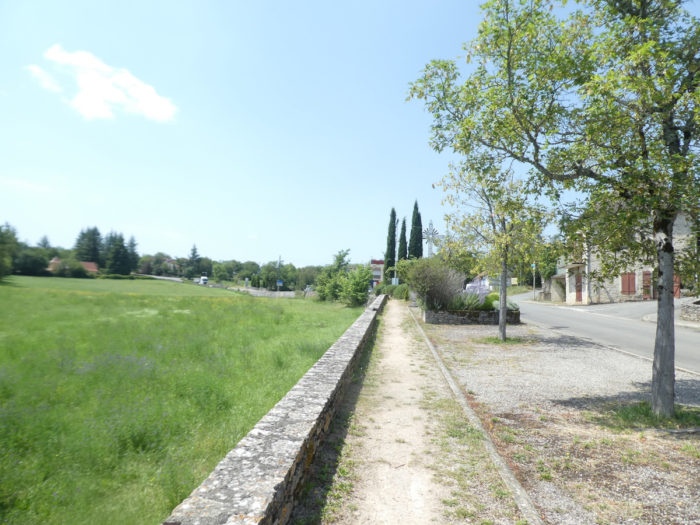 |

| The road reaches the locality known as Bel-Air, near a cross. | |
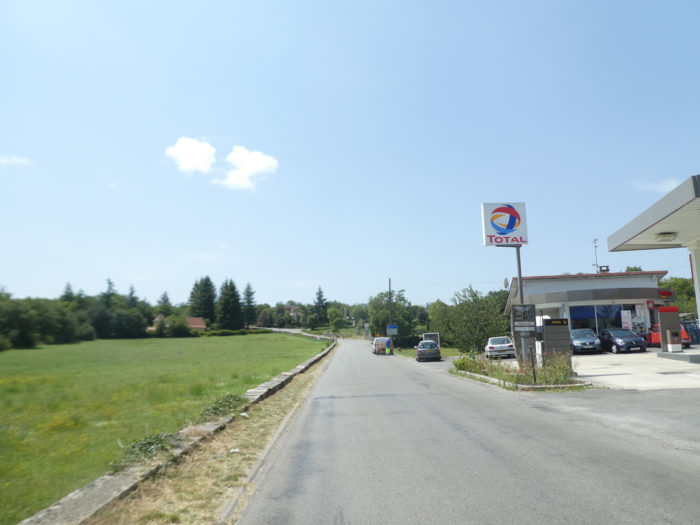 |
 |
| There the GR65 will follow the Chemin du Joncas, the Chemin des Dolmens, in the undergrowth. | |
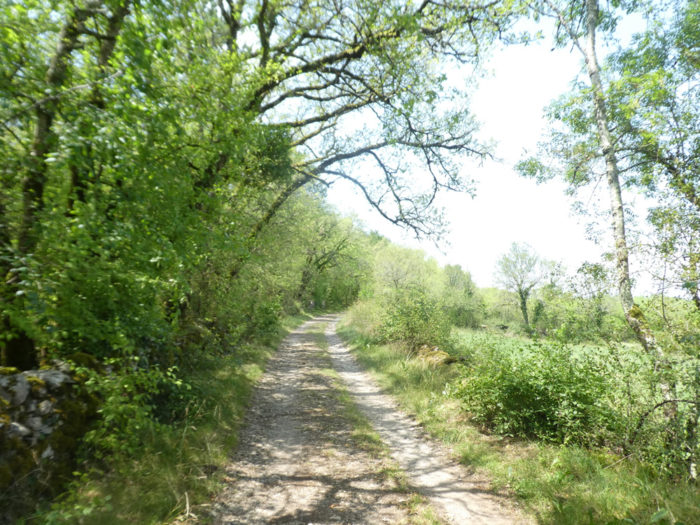 |
 |
| In Limogne, the vernacular architecture of dry stone can be seen everywhere: in the fields, in the enclosures, on the low walls along the tracks in this beautiful “gariotte” hidden at the corner of the woods. In the Cahors region, they say “gariotte” rather than “caselle”. | |
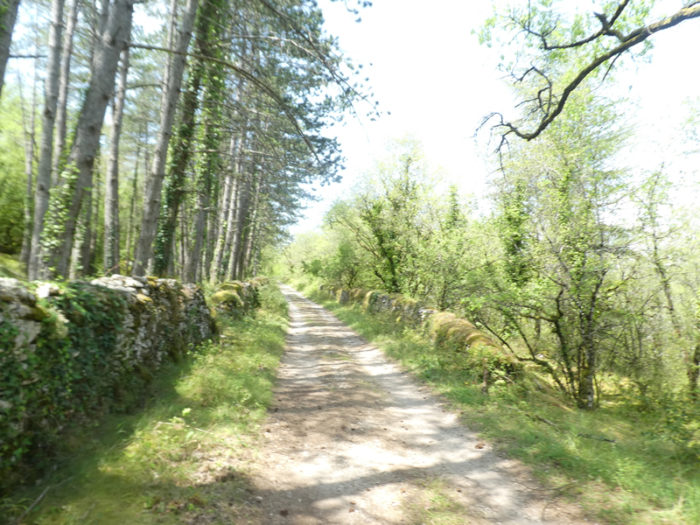 |
 |
| The pathway is magnificent, very stony, flattening or lightly sloping down. The mule tracks all look the same. These are stones in abundance that mistreat the feet. And small oaks all around. The pathway then finds a fork for the Joncas dolmen. | |
 |
 |
Many signs of the past emerge from even earlier times. The Joncas dolmen is a bit off the pathway. There is still a timeless atmosphere around these large stone tables which still hide many secrets and as many legends. Some will only see a very shady place for the picnic here. Dreaming, or eating, or both, your choice.
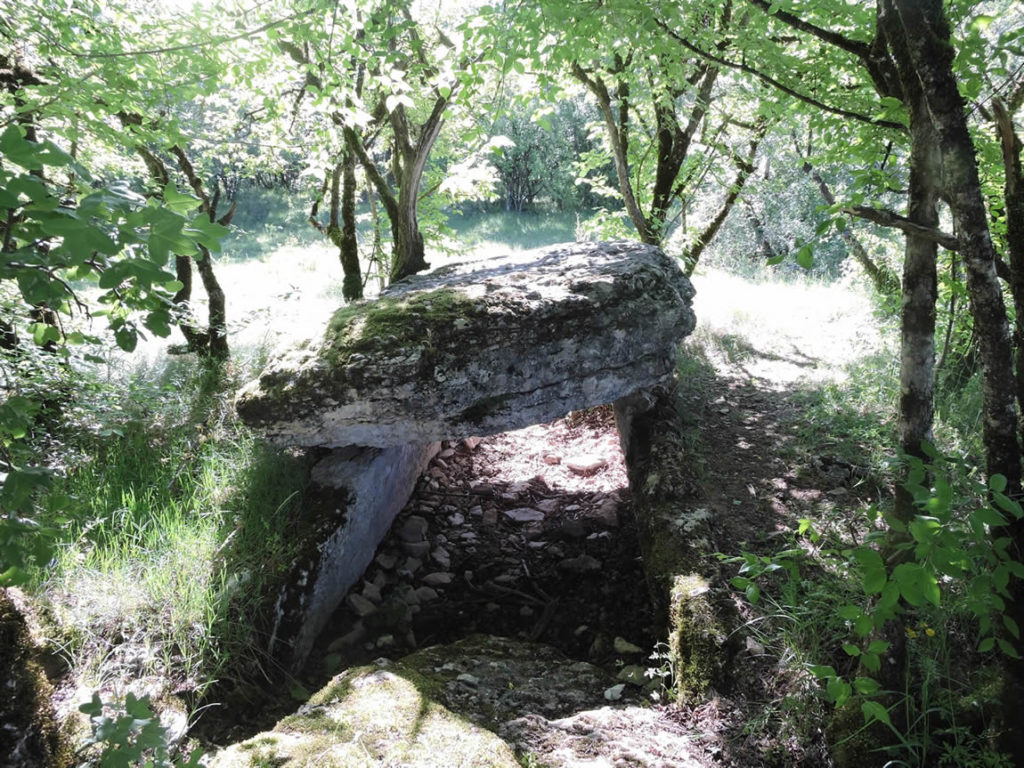
| Back on the GR65, the show is still there. For two days, you have become the fleeting spectator of an unchanging, eternal nature. There is always an atmosphere of “end of the world”, where silence is the key word, and you can only hear the sound of your footsteps crunching on the stones, where you feel free in the middle of the oaks. that make you dizzy. Some pilgrims try to compete with nature by creating cairns, ephemeral statues, so loaded with symbols. | |
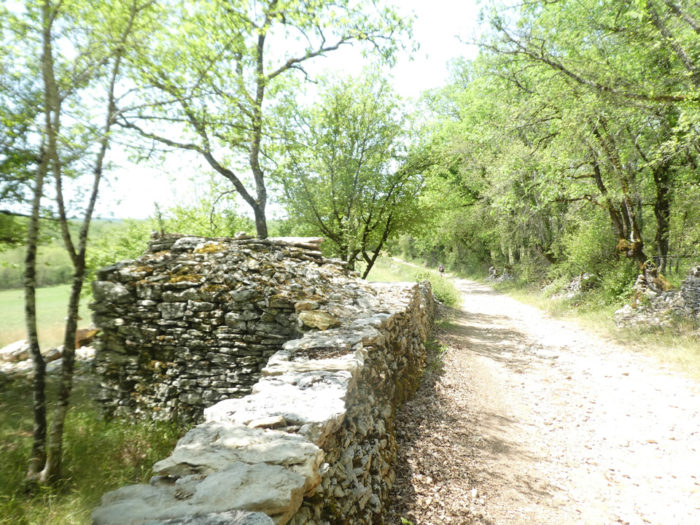 |
 |
| Sometimes the country opens up a bit to meadows. There is no culture in this barren, arid, dry land. Sometimes the walls rise a little higher, as if there was something to protect around here. | |
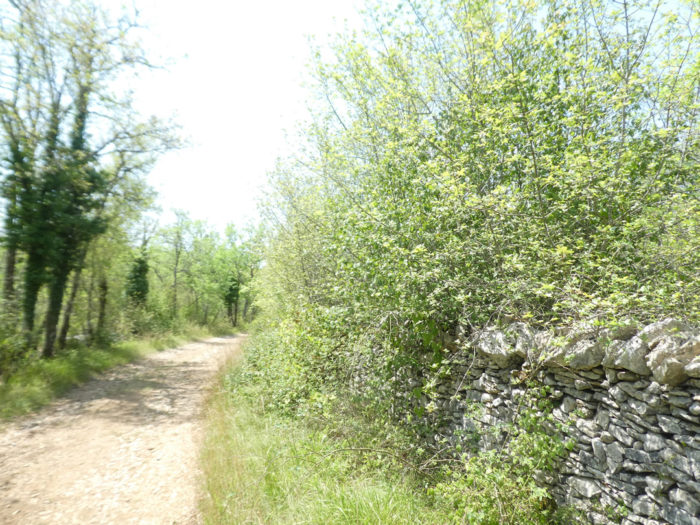 |
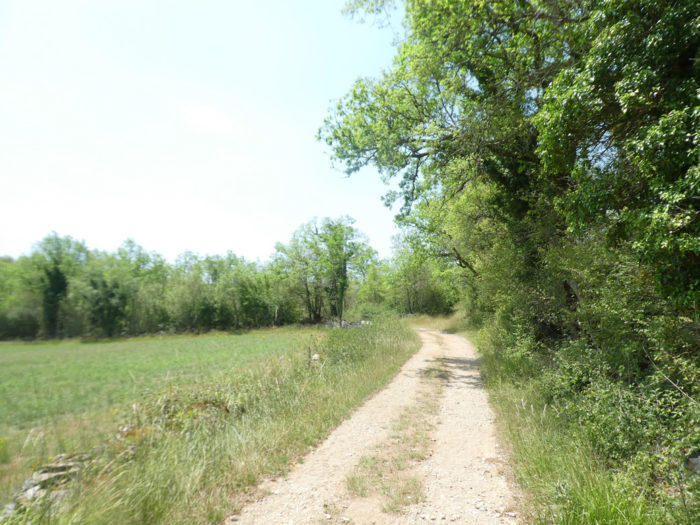 |
| Nearly, the forest opens up, and the GR65 joins a paved road near Ferrières Bas. | |
 |
 |
 |
 |
| There’s an embryo of life here on a farm where the rabbits have deserted the hutch. | |
 |
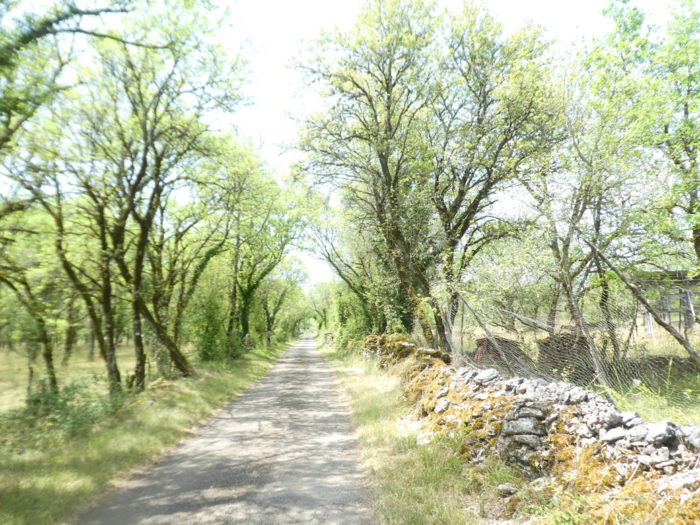 |
| For the admirers of Obelix, other dolmens lie on the causse. Sometimes they are reported. Religious symbols, of whatever religion, are always there to sign the way. The cross here has weathered over time. They went far in this region of limestones, to look for granite to make the crosses more perennial, eternal. | |
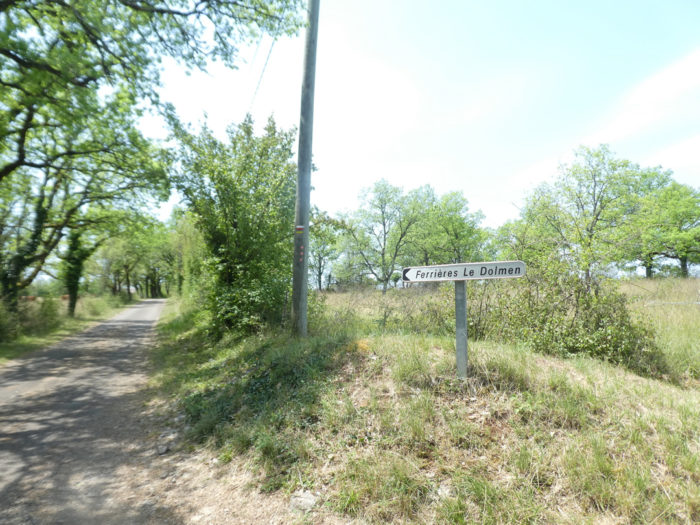 |
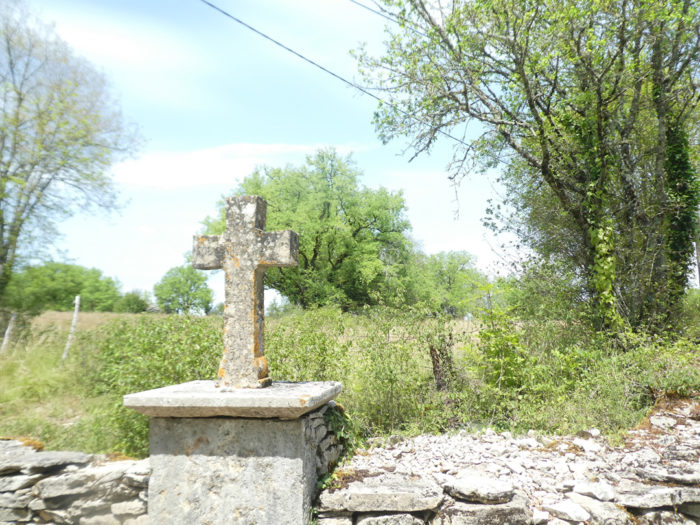 |
| The paved road then hesitates again between forest, meadows and bushy hills. At the edge of the woods, in a grassy dale, a few peaceful Aubrac cows graze the dry grass. There are almost only Aubrac cows in the causses. | |
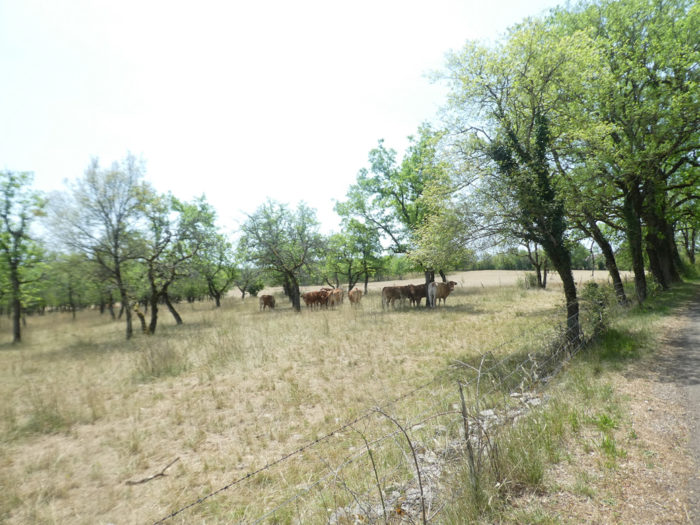 |
 |
A little apart, a massive, stern-eyed bull peers at his females. The breed does not represent the most elegant male specimens in France.

| Further on, the GR65 leaves the road for a dirt road. The few cultivated fields here are not planted with wheat, but barley, oats and triticale. Triticale is a hybrid of wheat and rye, used as a forage plant. | |
 |
 |
| The pathway here sets out again in more scattered undergrowth, with many ash trees and dogwoods, along the bramble hedges. | |
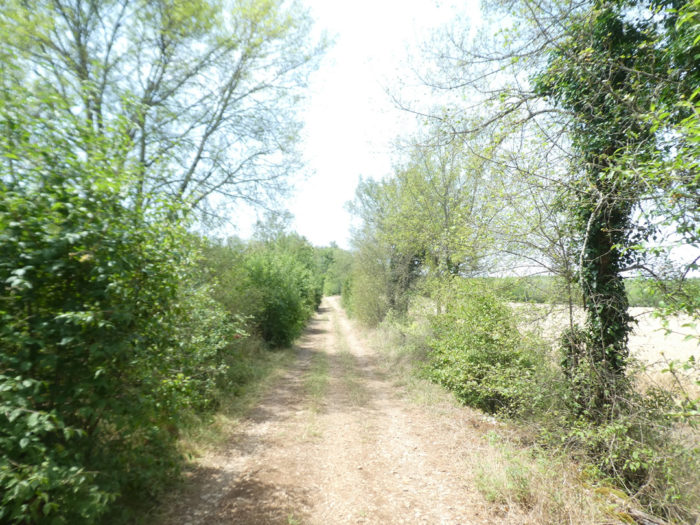 |
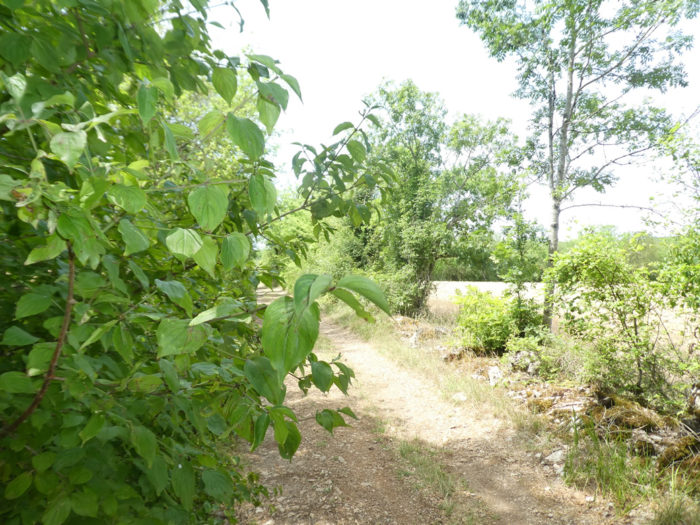 |
Section 2: In the undergrowth to Varaire.

General overview of the difficulties of the route: course without any difficulty.

|
In this universe of moor and drought, it is always the same trees that you meet, those of the causses. The oak remains the dominant tree, the extremely powerful king. But, country maple and Montpellier maple also make their way there, as well as ash when the country opens up a bit. Hornbeams and chestnut trees are rare in the region, if not sometimes a little hornbeam bushes as usually along the hedges. |
|
 |
 |
Then, miracle! A small body of water, which you do not know if it is an old washhouse, a fountain with a spring, or simply stagnant water. But, it’s water, yes.
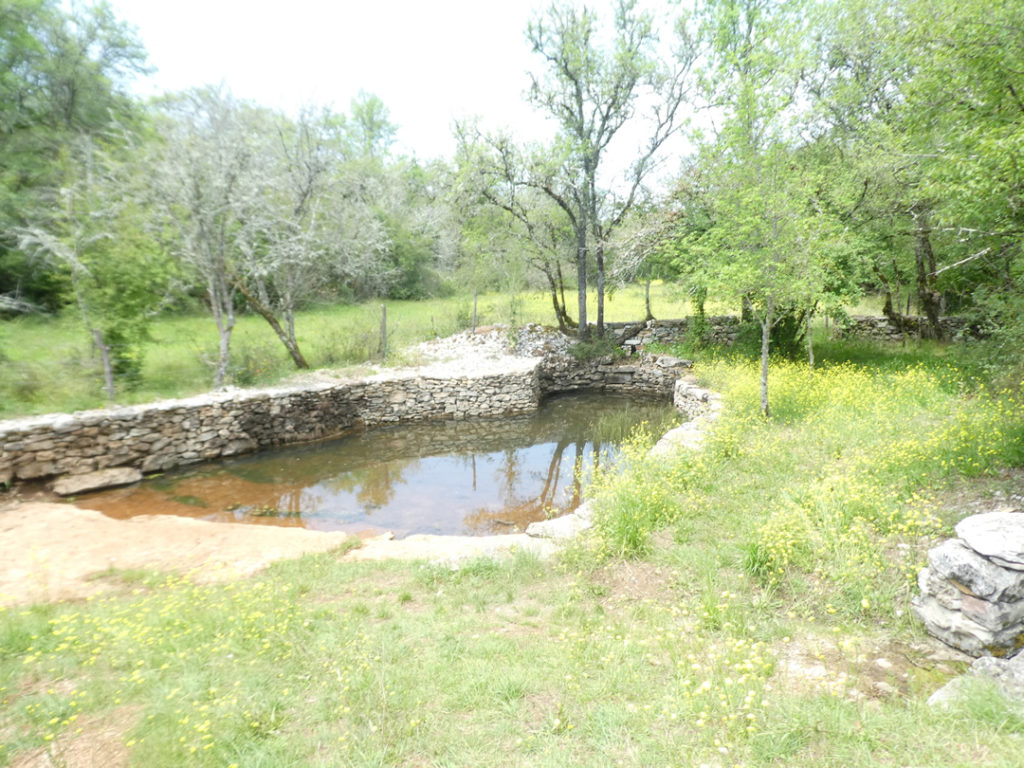
|
And the dry-stone walls pass by again, one behind the other. In this magnificent uniform ruin, which still stands by chance, perhaps a barn, a little larger than an ordinary “gariotte”, even the roof is made of gray limestone. |
|
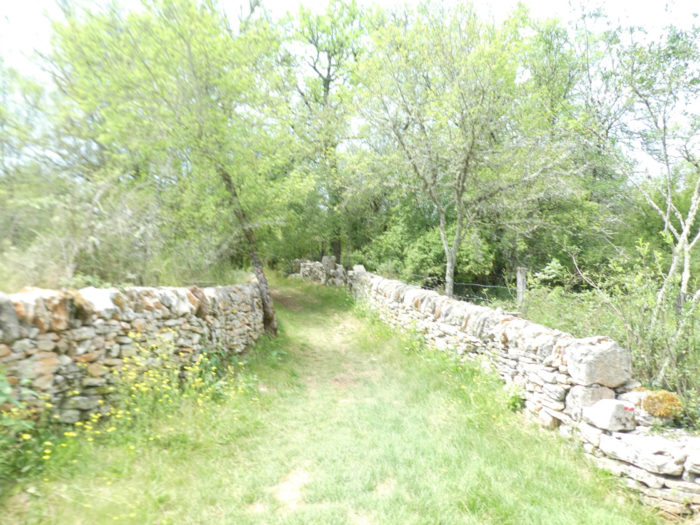 |
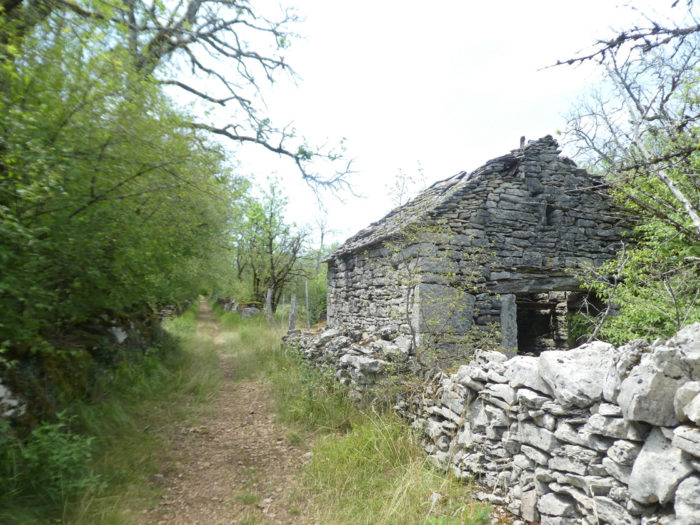 |
On slight oscillations of the ground, always runs the ocher and stony dirt road, surrounded by magnificent low walls covered with moss. For a long time, walking was unfairly associated with vagrants and barefoot people. After centuries of denial, walking has given itself a rebirth. Not all hikers go to Santiago. It is only to see the happy faces of the walkers who daydream here, in these exceptional landscapes, for many of them, for the simple pleasure of putting one foot in front of the other and starting over.

|
Sometimes the oaks twist, often grow askew to find a little light, and the high forests impose shadows of silence. Here the “gariotte”has not been able to withstand the ravages of time. |
|
 |
 |
|
At the end of the forest, the large farm of Pech Canot marks out the route. |
|
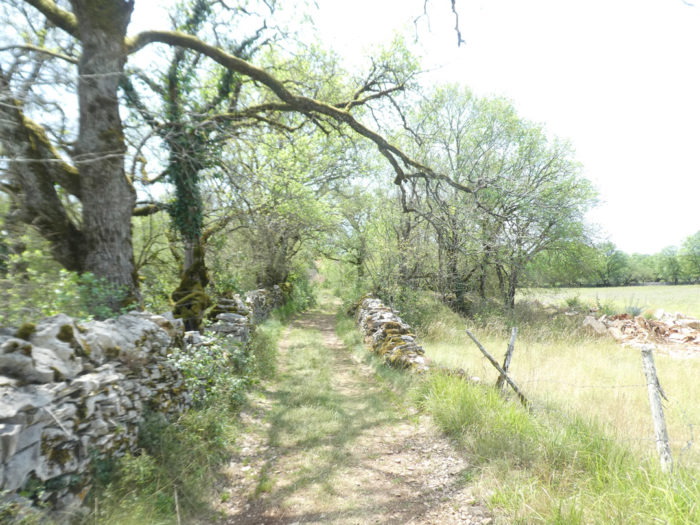 |
 |
|
Here the Lot electricity company takes the bet on sustainable development. Well done! |
|
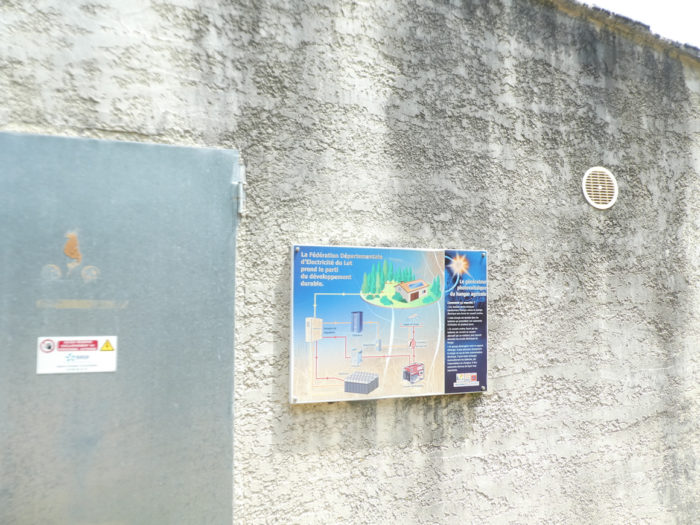 |
 |
| Further afield, the GR65 will follow a small paved road for a few moments. They are only small roads for the use of the peasants. Outside the main roads, you will rarely encounter a vehicle. | |
 |
 |
|
Further ahead, the GR65 leaves the road to find a wide dirt track. |
|
 |
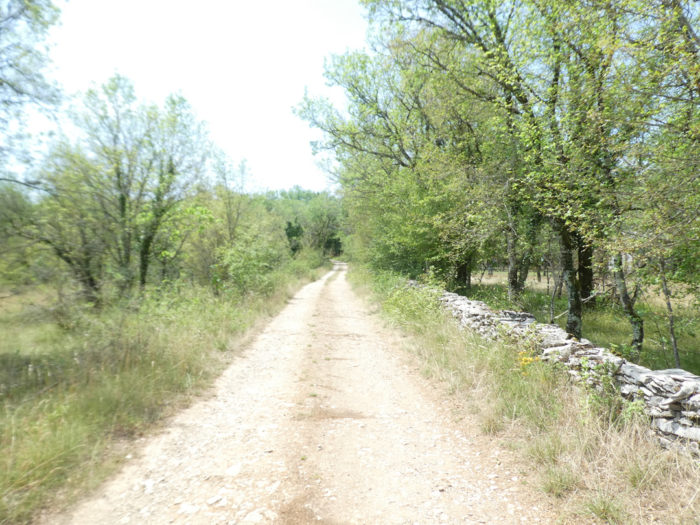 |
|
And nothing changes, along this great avenue. Nothing superfluous around here, just listen to the silence of the trees, that’s the program. |
|
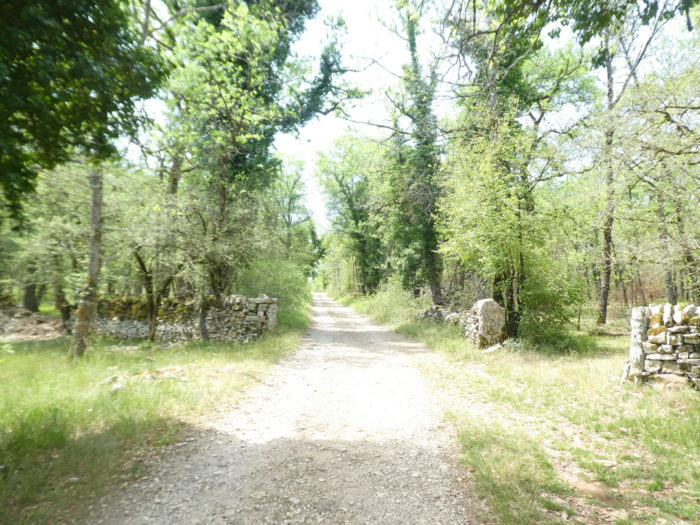 |
 |
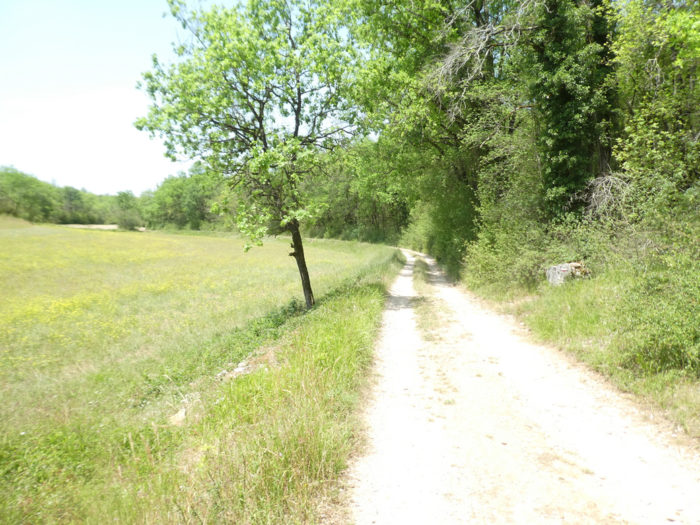 |
 |
|
Further on, after a few meager fields of cereals, the pathway returns to a thicker undergrowth. |
|
 |
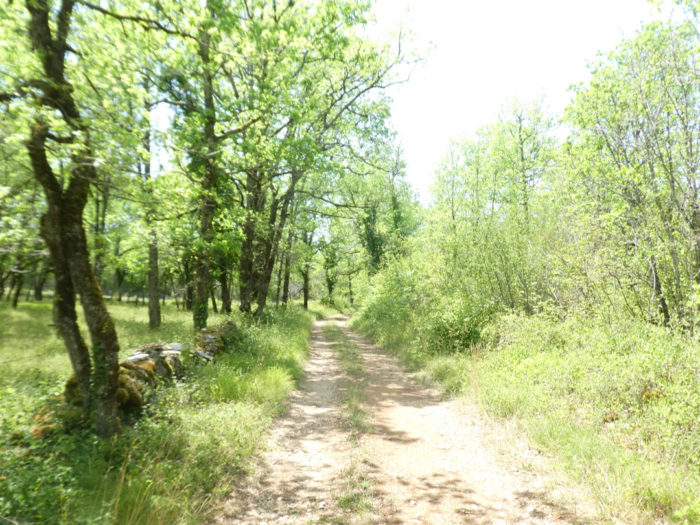 |
|
Everything is then orchestrated again in the serene and calm harmony of the peaceful forest, in the symphony of colors that the light casts on the oaks with gnarled branches, or on the faded moss of the stone walls. |
|
 |
 |
 |
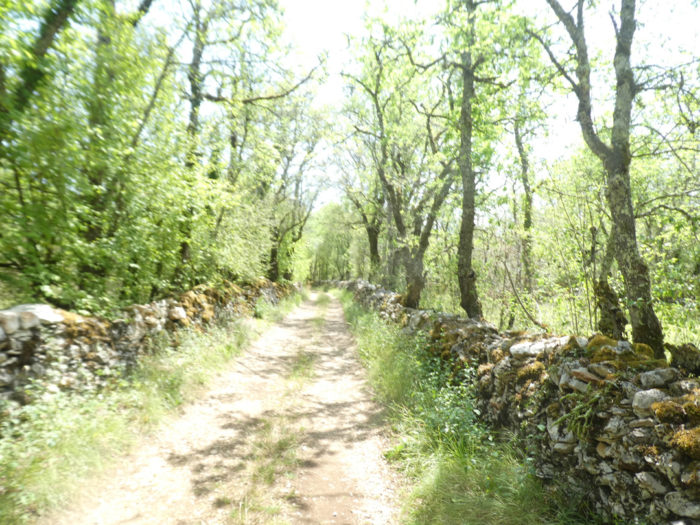 |
What more can be added to this little wonder that the ancients erected from the depth of their soul?

|
The forest remains one of the last bastions of freedom not to be touched. Silence and loneliness at the moment cannot be sold. Do we know if one day we will have to pay for them at a high price? |
|
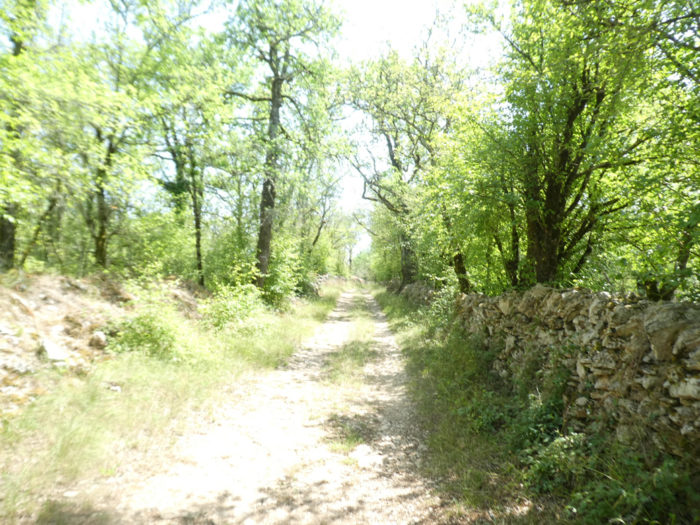 |
 |
 |
 |
|
Further afield, the GR65 finds again a small paved road. |
|
 |
 |
|
Here you are 1 kilometer to Varaire and the GR65 follows the road that leads there. |
|
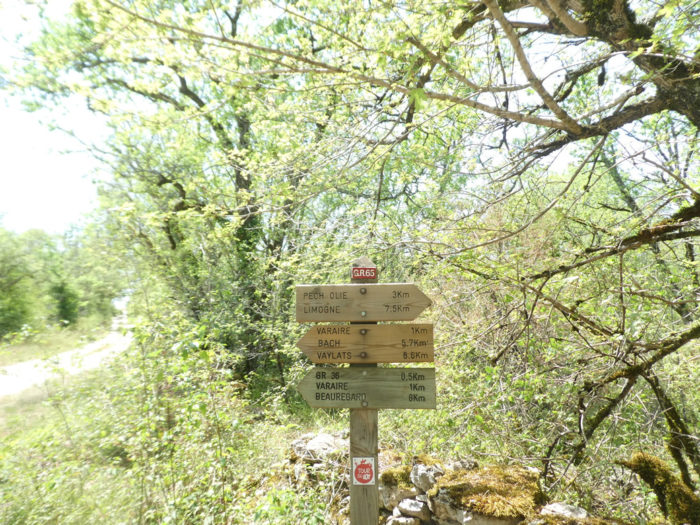 |
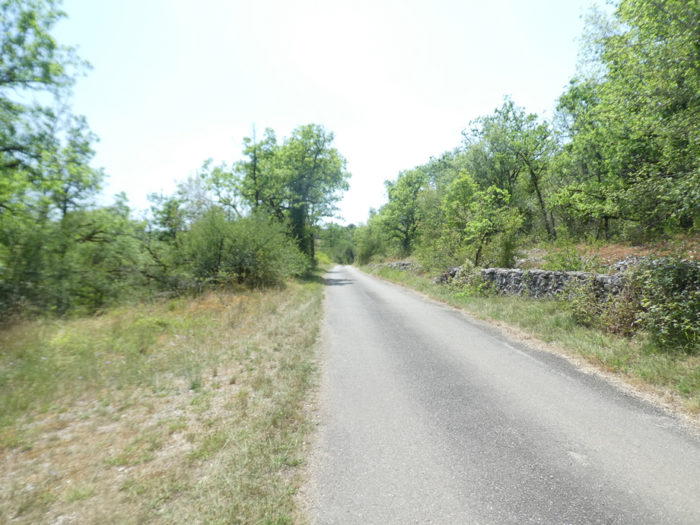 |
|
The road climbs a little through the countryside to the village. |
|
 |
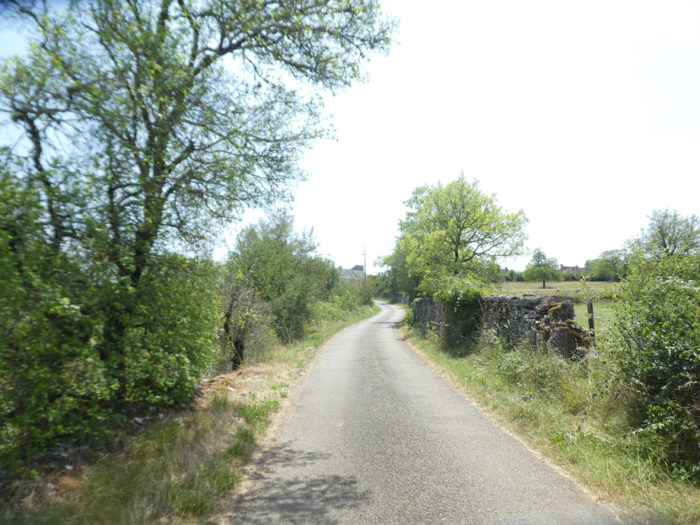 |
Section 3: A short detour via Varaire before returning to the causse.

General overview of the difficulties of the routes: course without any difficulty.

|
On your way up, you can see the steeple of the village, and the road reaches Les Ecoutilles crossroads. |
|
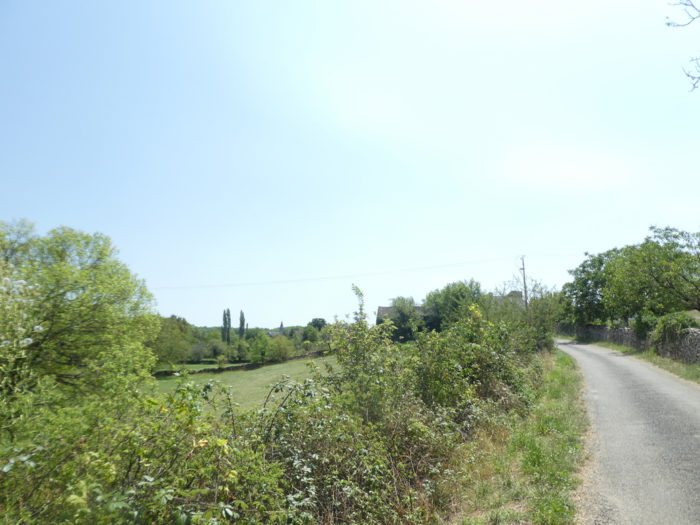 |
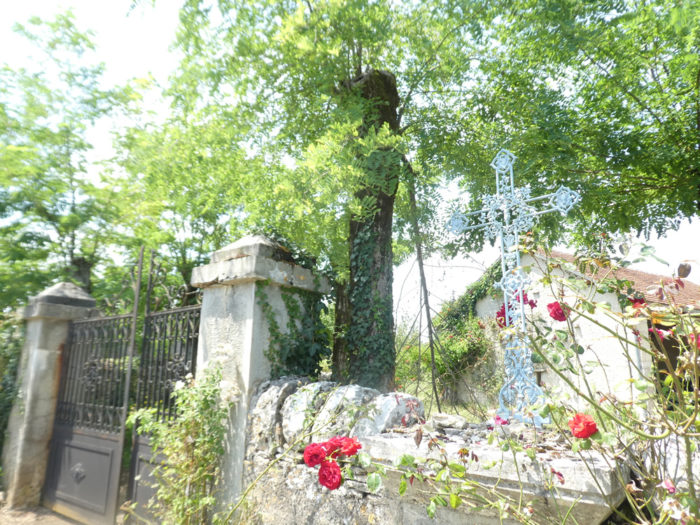 |
|
The GR65 grazes Varaire (311 inhabitants), but does not stop there. Take the detour. The village deserves it. You can stay in Varaire, where you can also find something to eat, which deserves to be mentioned, because this type of infrastructure is not abundant on the stage. In the heart of the village lies a divine “butterfly washhouse”, in which the ducks splash around in the greenish water. It was the breeding ground of the Cardaillac, a famous sprawling family, which has spread to many places in the causses. There used to be a hospital attached to a church, known as St Jacques de Peyronèse, which welcomed pilgrims, on the edge of an ancient Roman road, called here “Cami Gasco”, the one that precedes the “Cami Ferrat”, after Bach. History also notes that two inns received travelers in the Middle Ages. |
|
 |
 |
 |
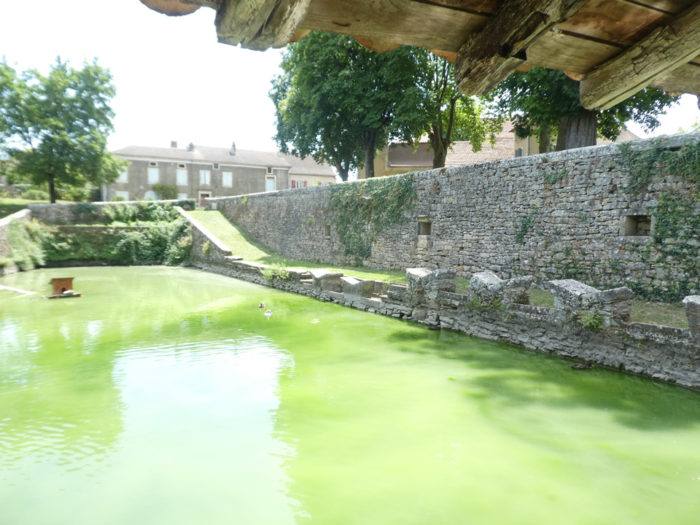 |

|
The 15th century St Barthélemy church, enlarged in the 19th century, is very bright, in its gray and pink limestones. Some pretty nice statues of saints are present here. |
|
 |
 |
|
Some pilgrims will be surprised by the kitsch side of the Virgin who rests in an alcove near the church. Nestled around its church, beautiful stone houses, some looking like fortresses, wrap around the seigniorial residence of the Cardaillacs and its gigantic dovecote. |
|
 |
 |
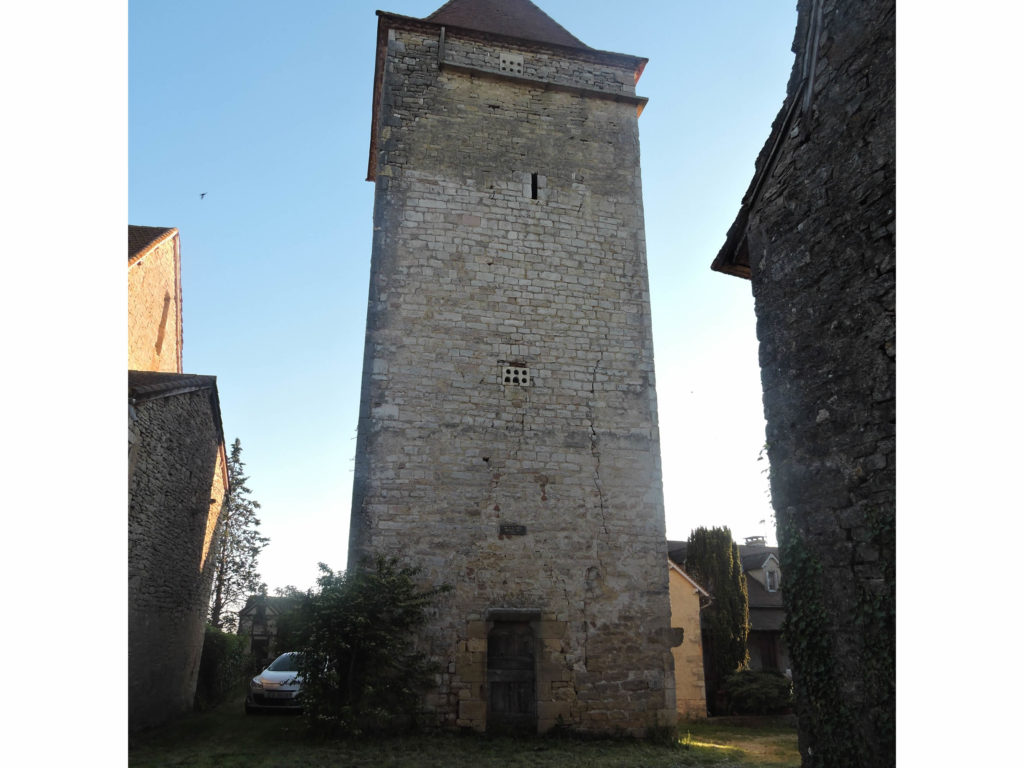
|
You have to go back to Les Ecoutilles, to continue the journey. |
|
 |
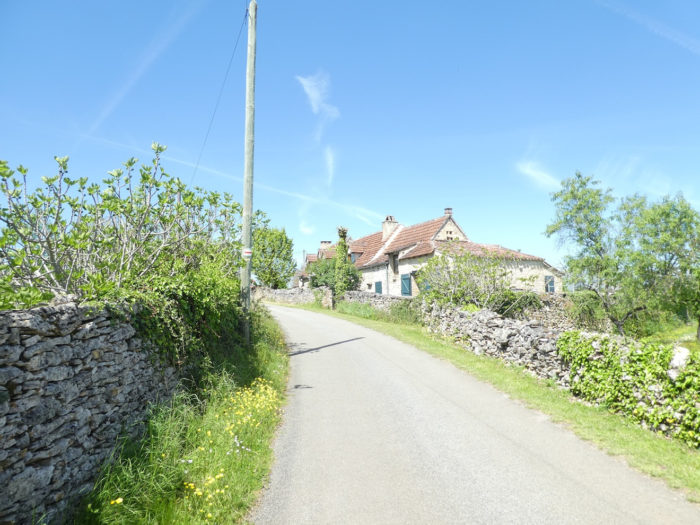 |
|
The route leaves Les Ecoutilles on the paved road, along these magnificent stone walls covered with moss, which run alongside the tracks and roads on the causses. If at the top of the causses, it is mainly small downy oaks that haunt the forests, as soon as you descend lower, the vegetation is more complex. Large white oaks are more numerous, but you find in fairly large quantities walnut, ash, country maple and Montpellier maple, these last two trees being very common in the causses. |
|
 |
 |
|
The GR65 still runs on the road near a sort of small castle lost in the trees, then reaches the dirt road, under hedges of oaks and maples trees. |
|
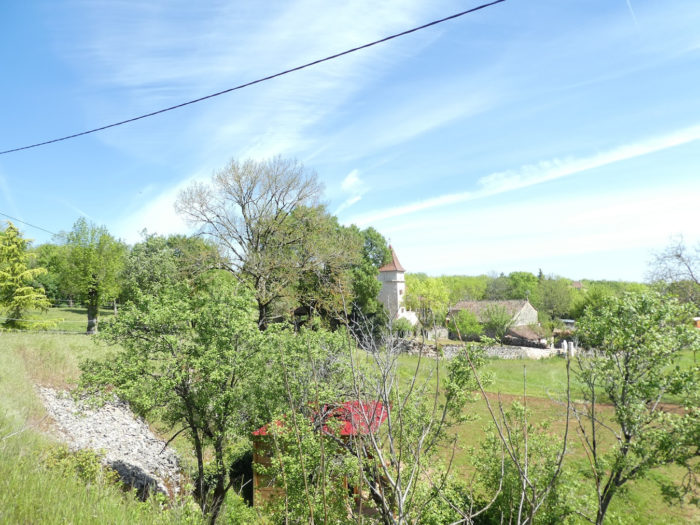 |
 |
|
Another beautiful stone house on the edge of the undergrowth, and the route returns in the majesty of the causse. Little by little, the oak resumes its role of master of the causses. |
|
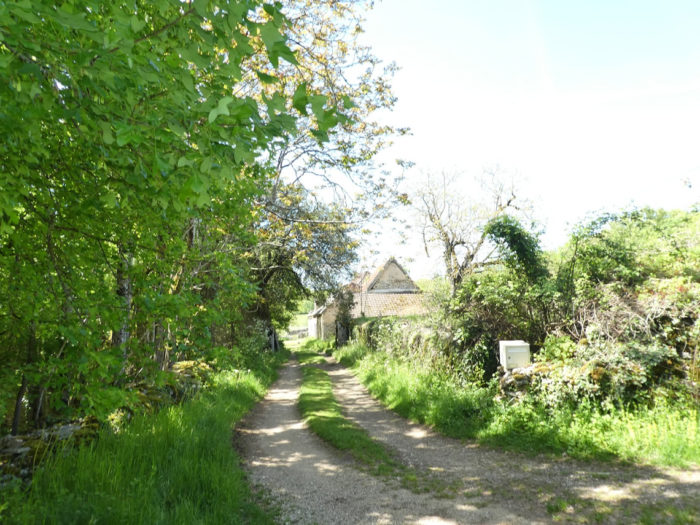 |
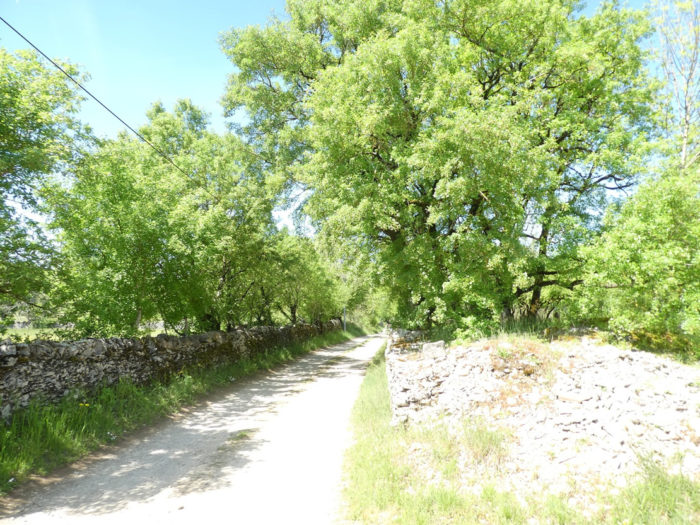 |
|
The pathway, always magnificent, will run for kilometers, among the trees, in a rather sparse forest, surrounded by stone walls. As always, the magic happens in these places. |
|
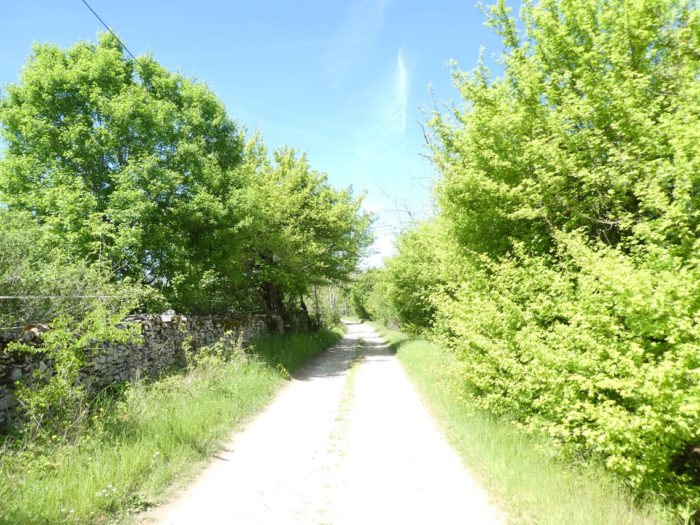 |
 |
 |
 |
|
What more can we say, except listen to the silence. There is no water here. It’s bone dry. |
|
 |
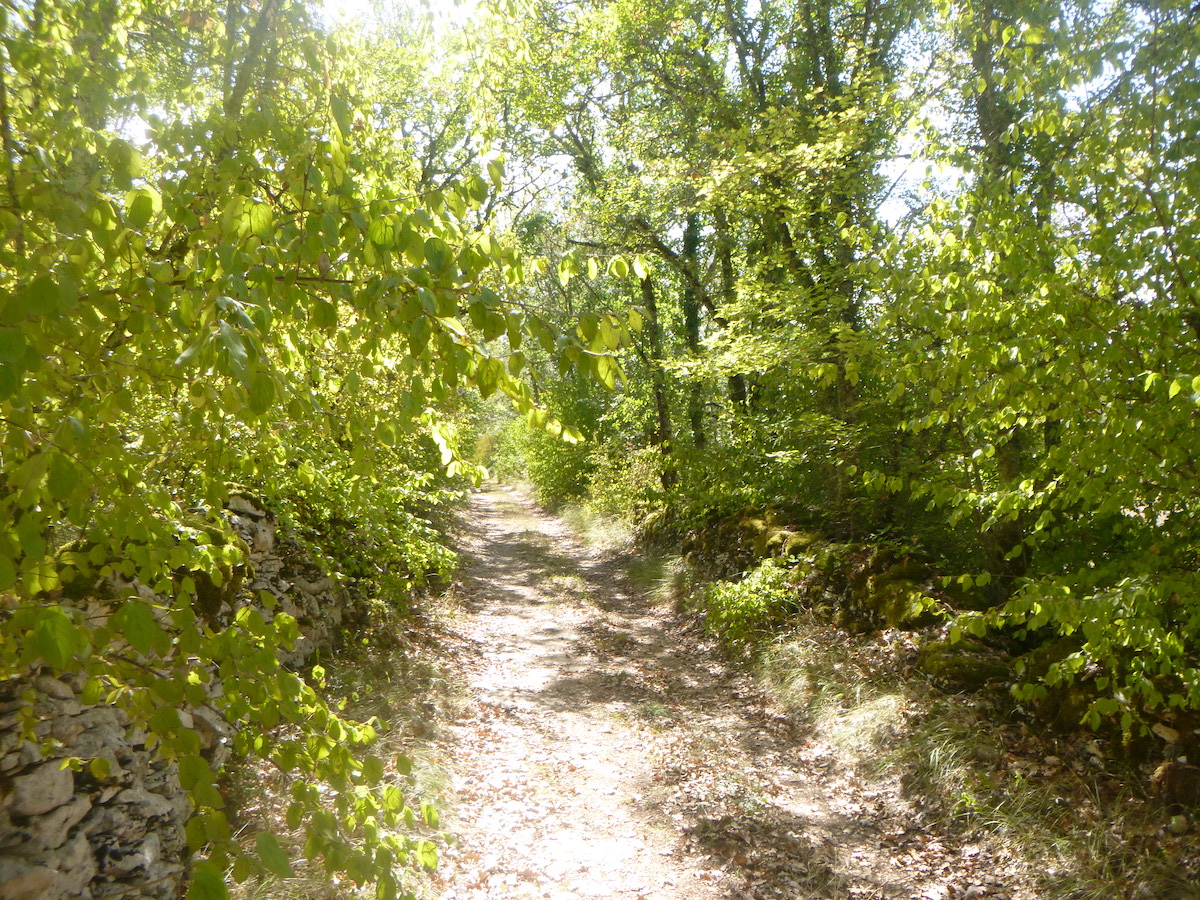 |
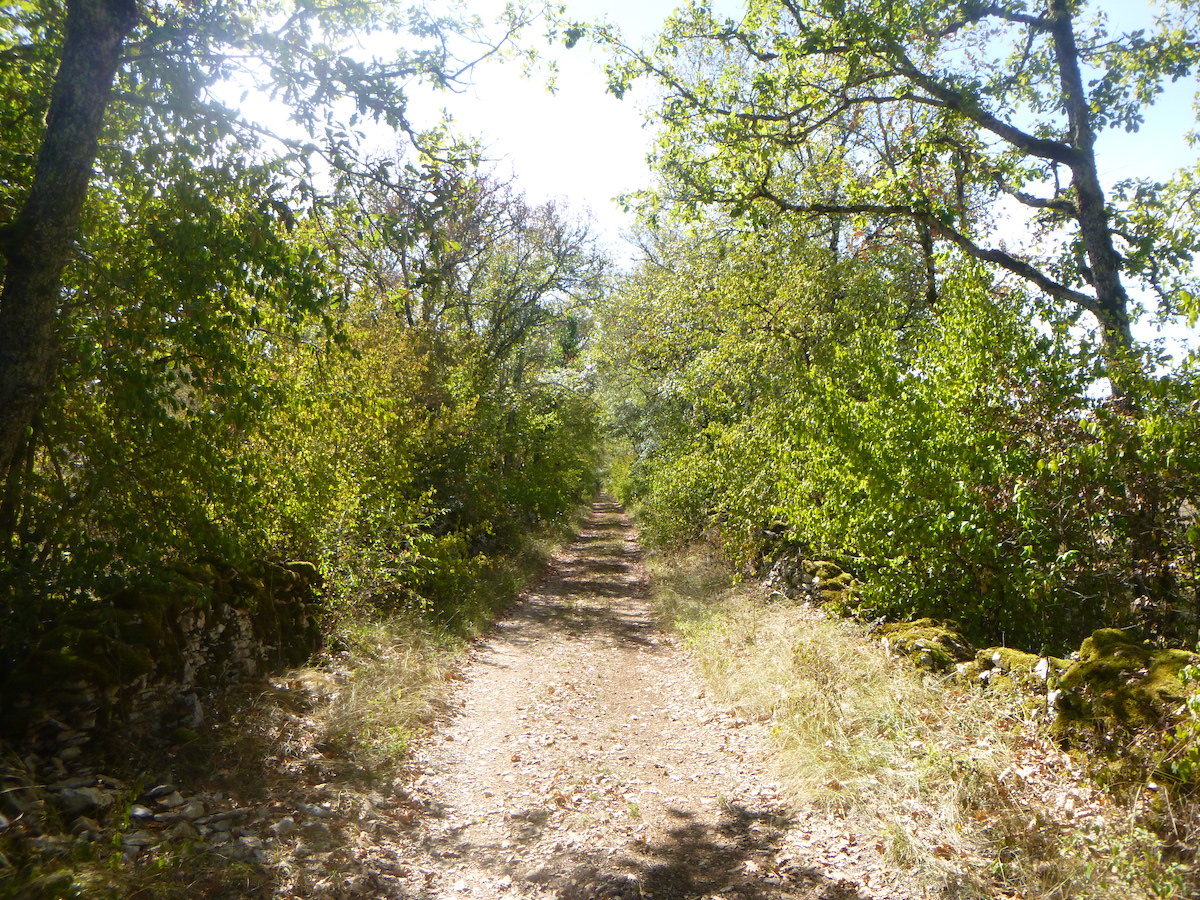 |
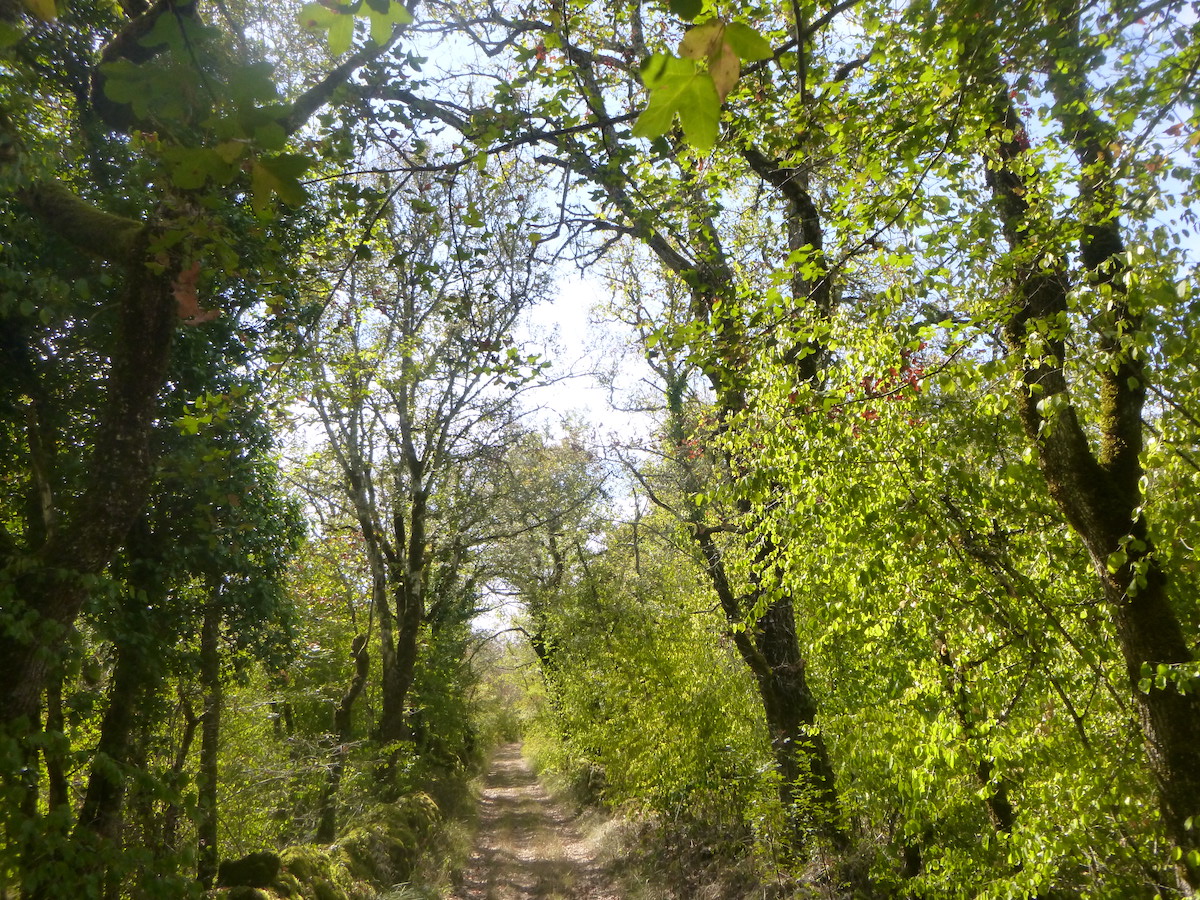 |
|
This entire region is included in the Causses du Quercy Regional Natural Park. It is part of a gigantic global geopark recognized by UNESCO since 2017, a protected area for its dry-stone heritage, its active pastoralism and its mineralogical and paleontological universe. |
|
 |
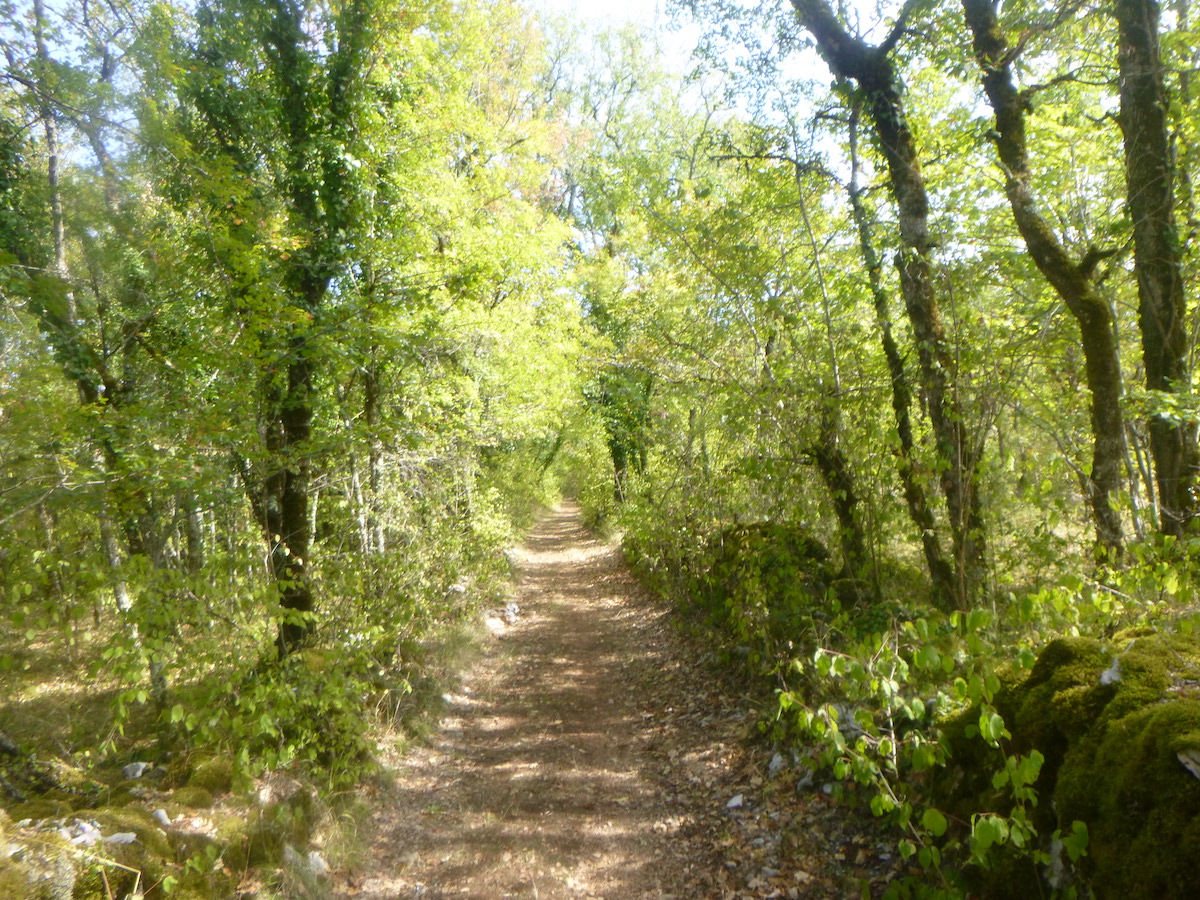 |
Section 4 : On the way to the monastery of the Daughters of Jesus.
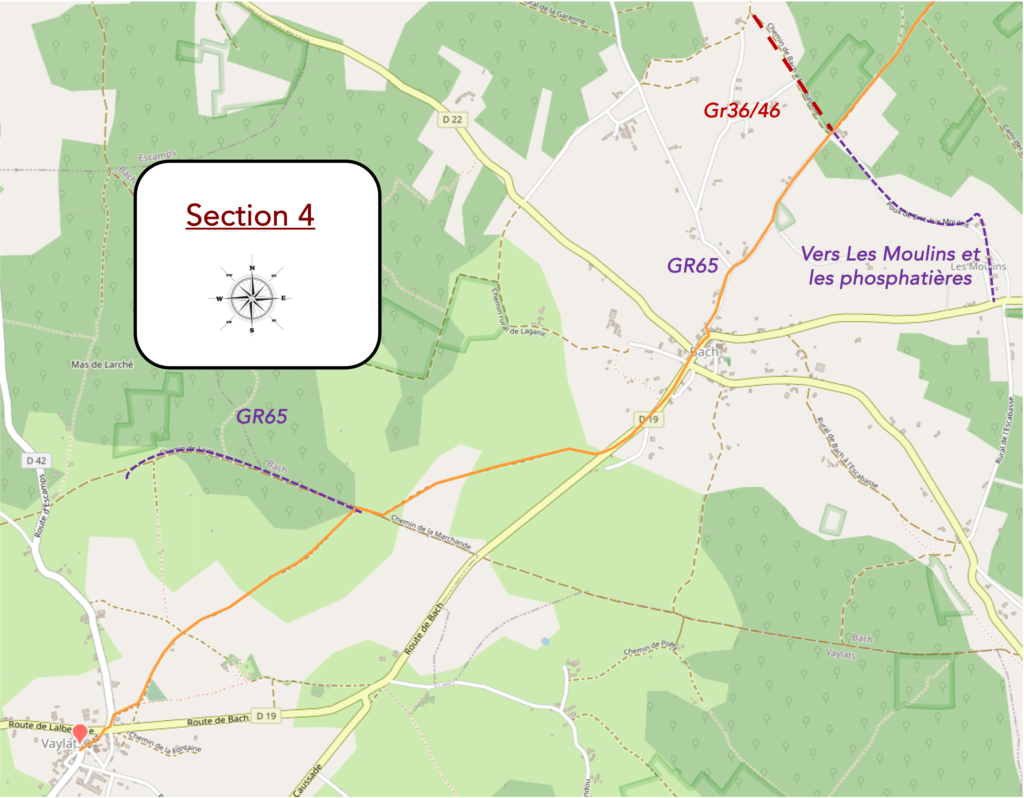
General overview of the difficulties of the route: course without difficulty.

| It is still an adorable stony pathway which wanders under the stunted oaks of the causse. | |
 |
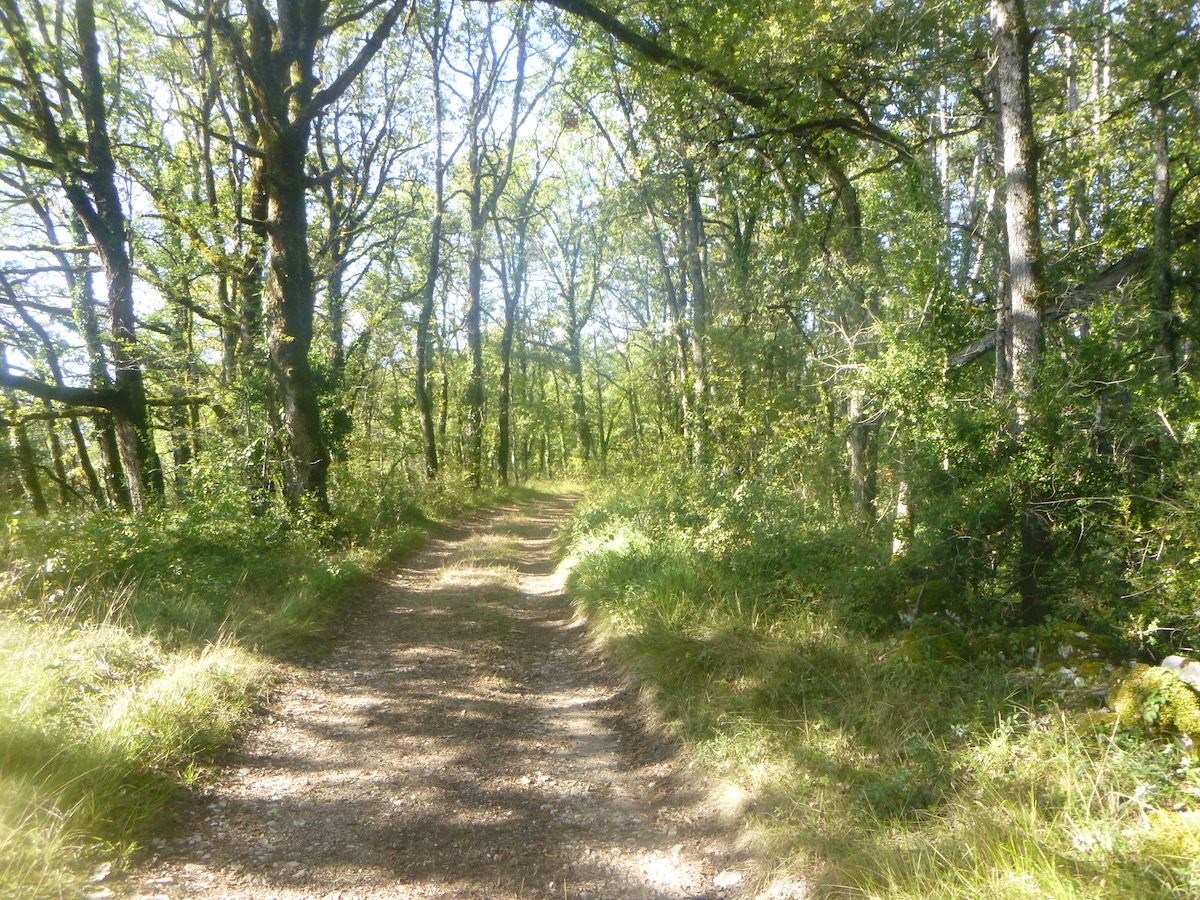 |
| How can you get tired of these low walls covered in moss, these little puny oaks and these dogwood hedges at the side of the track? It’s just wonderful. | |
 |
 |
|
|
|
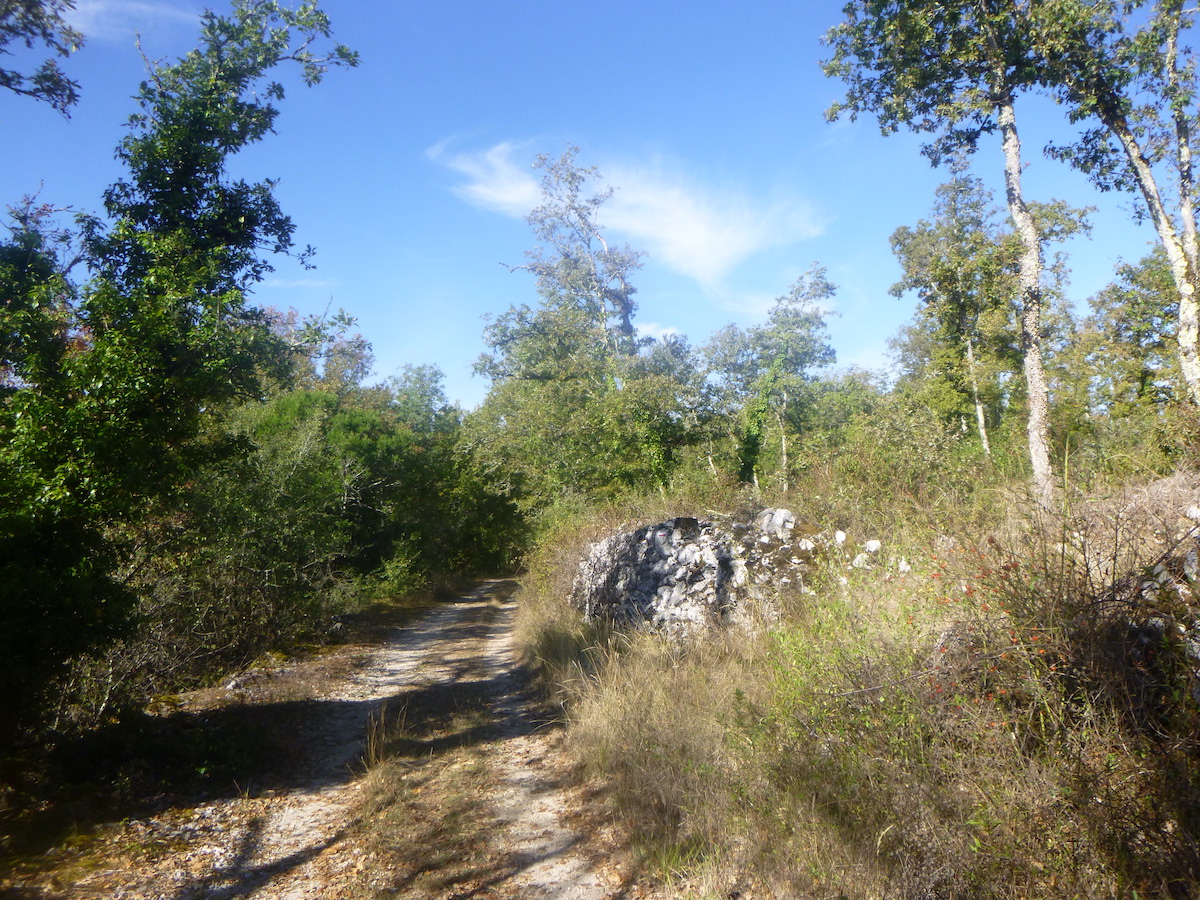 |
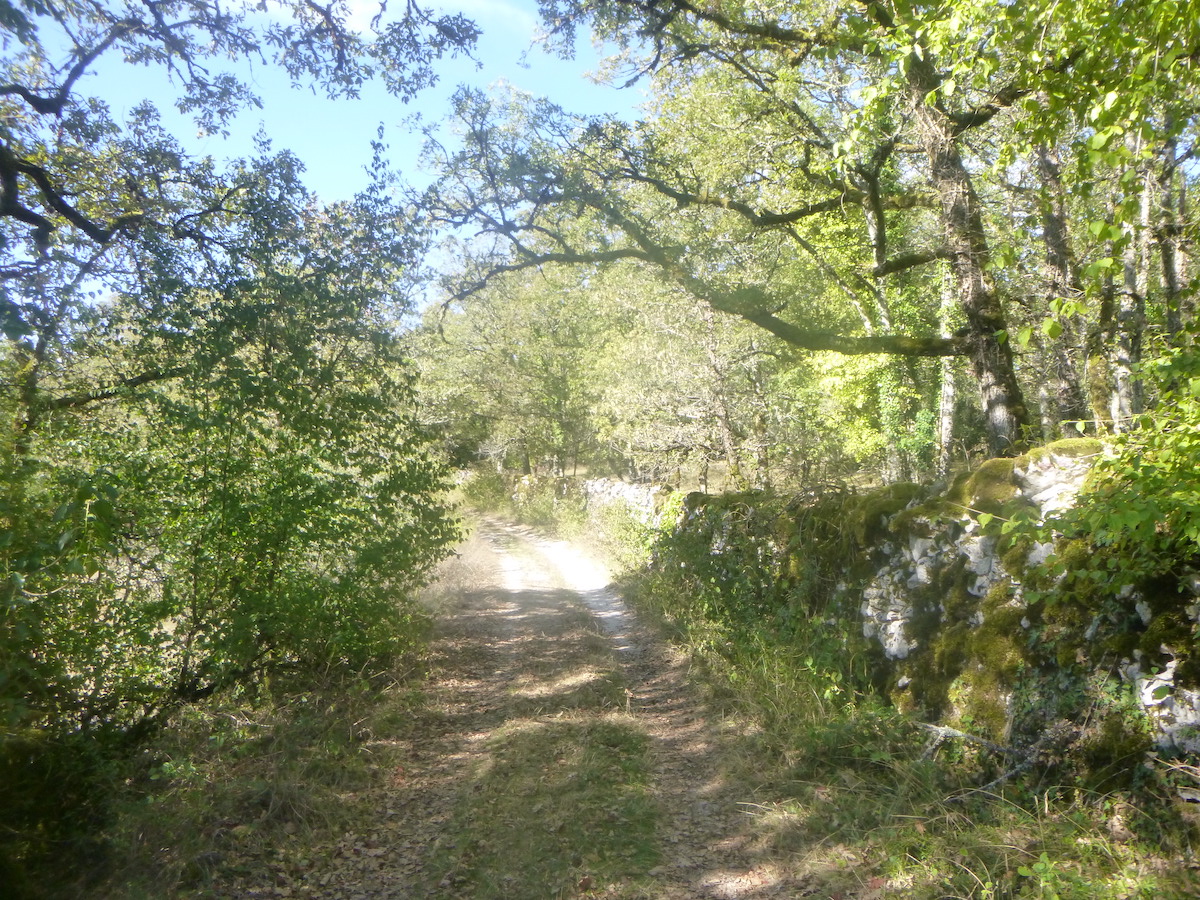 |
Shortly after, it is the junction with the GR36/46 which comes from Célé Valley, passing through St Cirq-Lapopie. We deal with all these routes in another chapter. It is a strategic crossroads. Here you can also go to Les Moulins, where you can stay or go to the phosphate mines of Coup D’Aral, a stone’s throw from Les Moulins. But the vast majority of pilgrims do not go there to visit the mines.
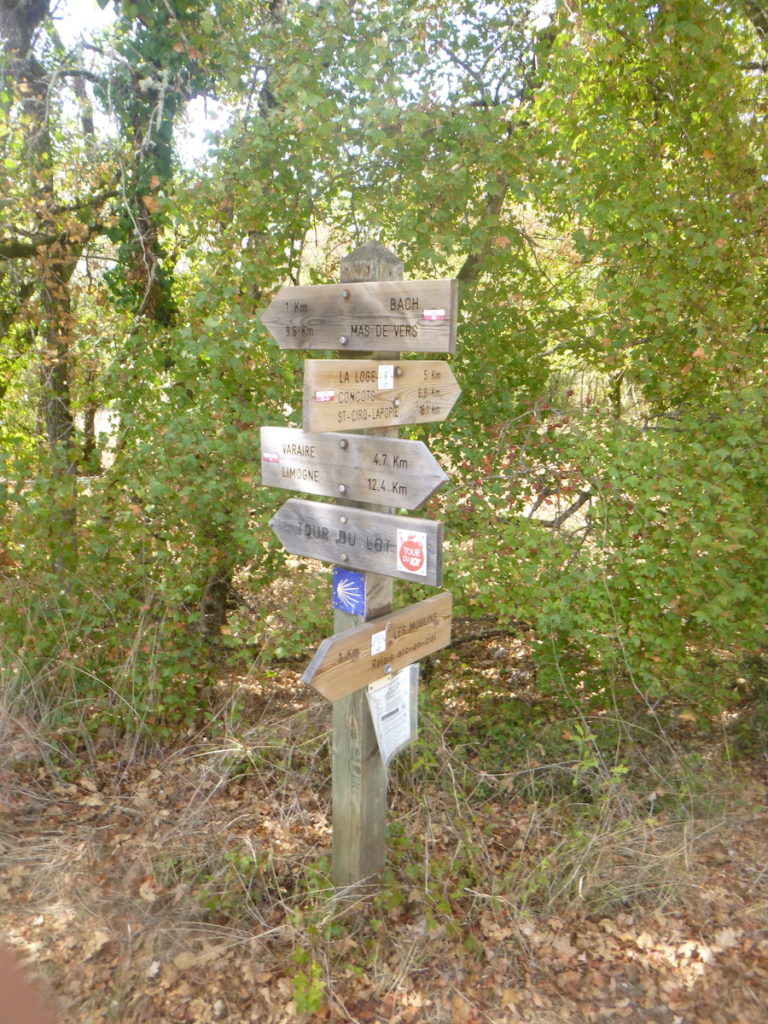
| The mines of Coup D’Aral, a stone’s throw from Les Moulins. Yet the site is magical. You can go down into the caves and we explain in detail the formation of phosphate. | |
 |
 |
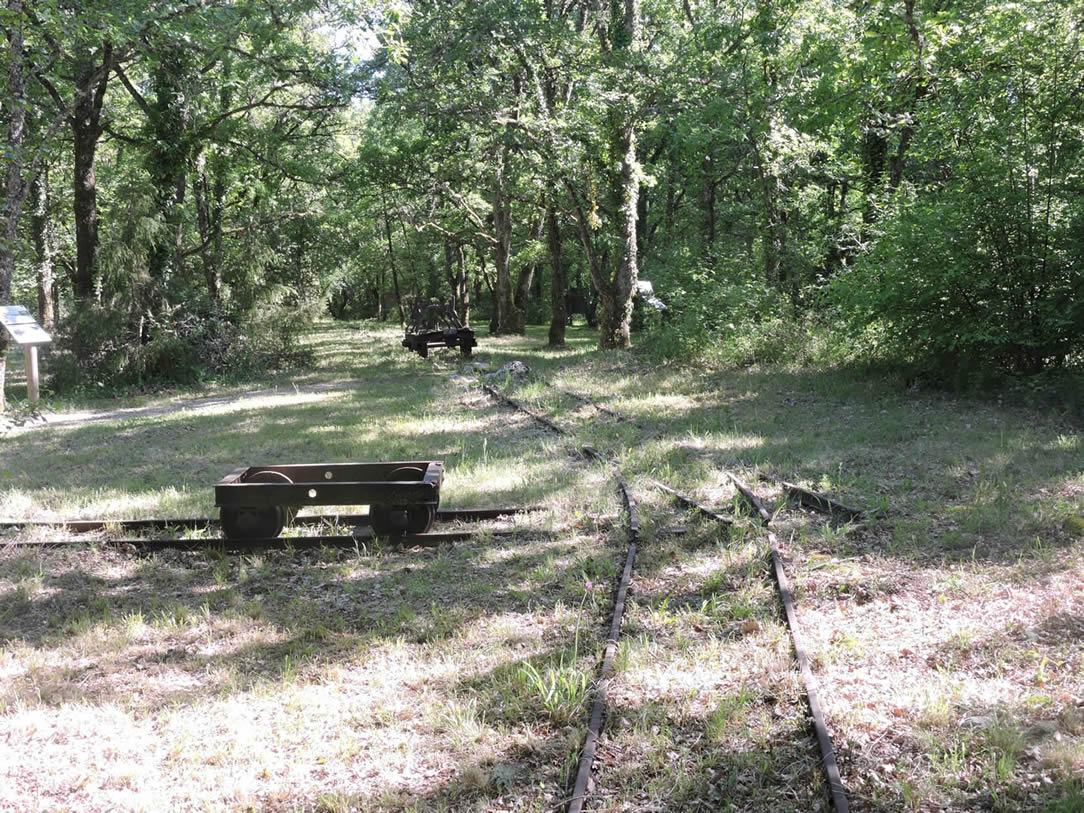 |
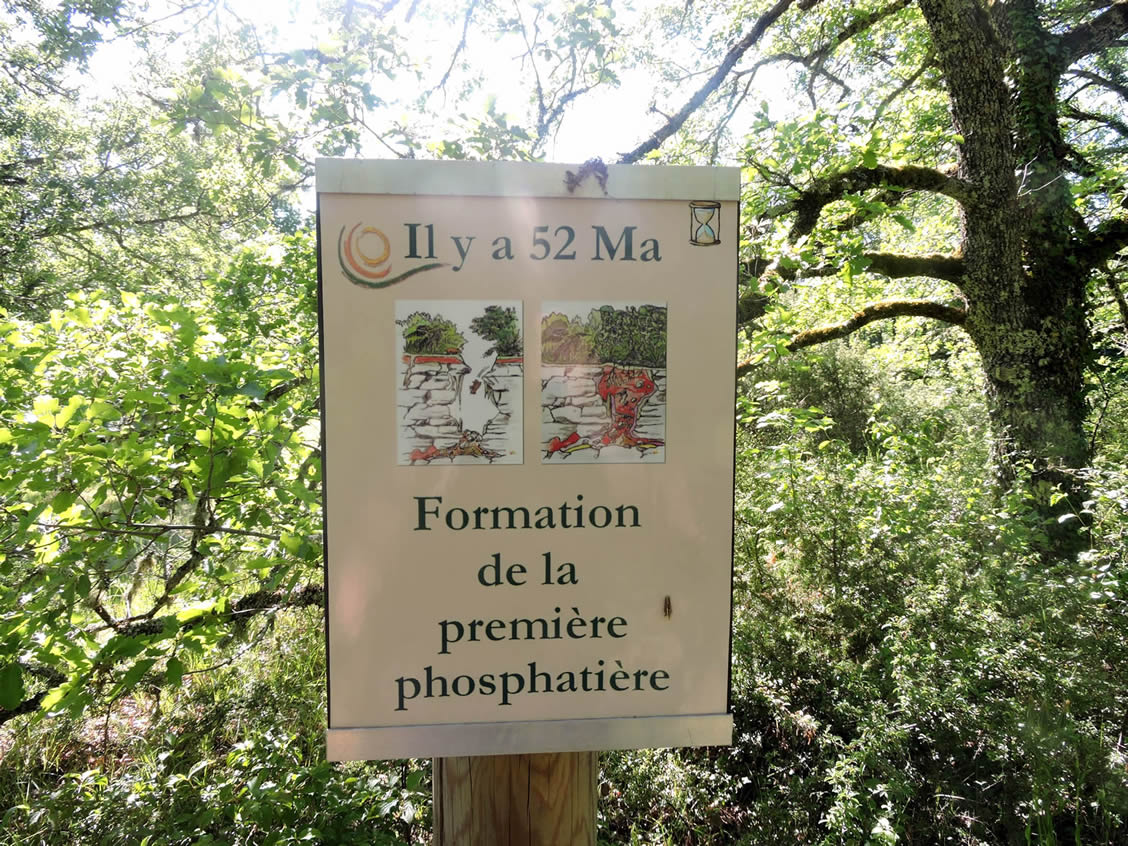 |
But obviously, phosphate doesn’t mean much to the majority of pilgrims, other than being an unfortunate additive to laundry products. You then quickly find a small asphalt road which runs towards Bach.

| There are some very beautiful stone houses along the route. | |
 |
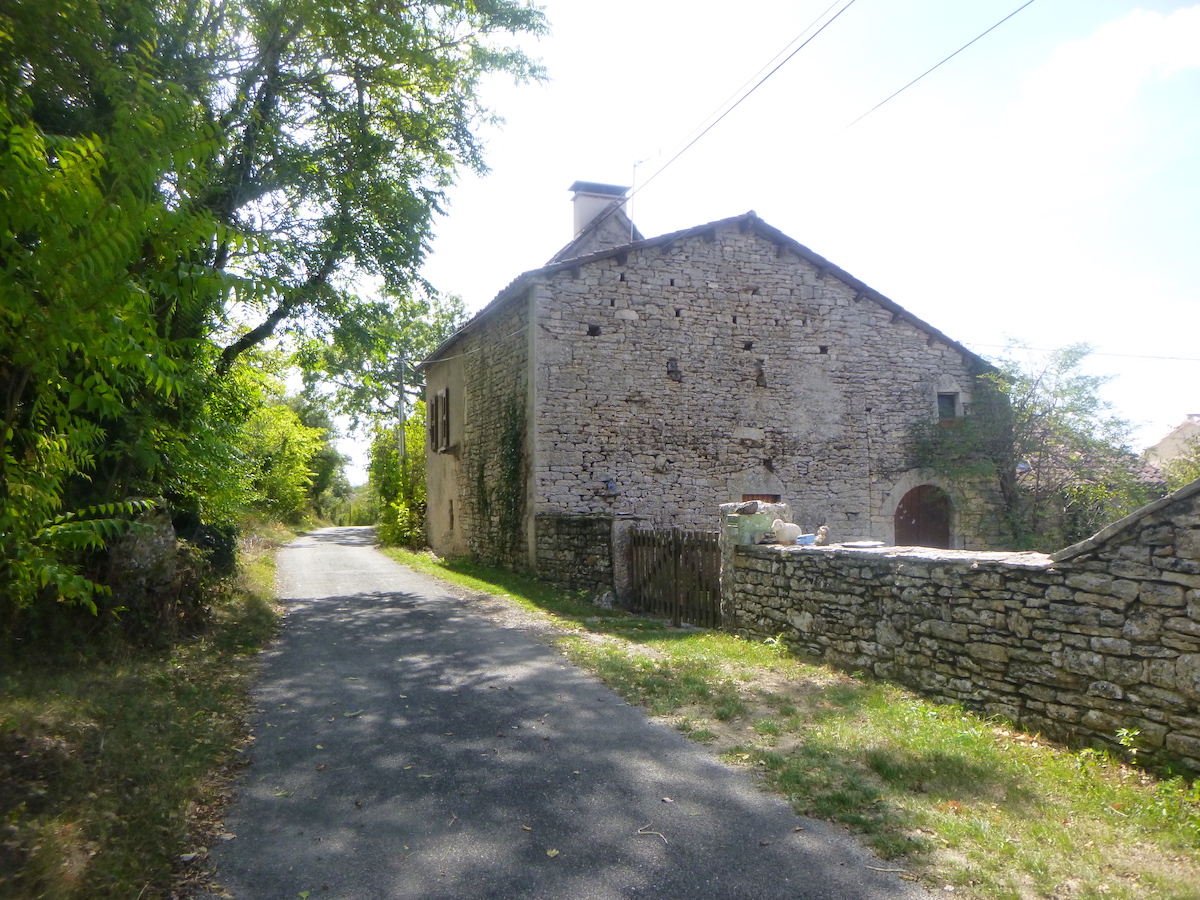 |
| . | |
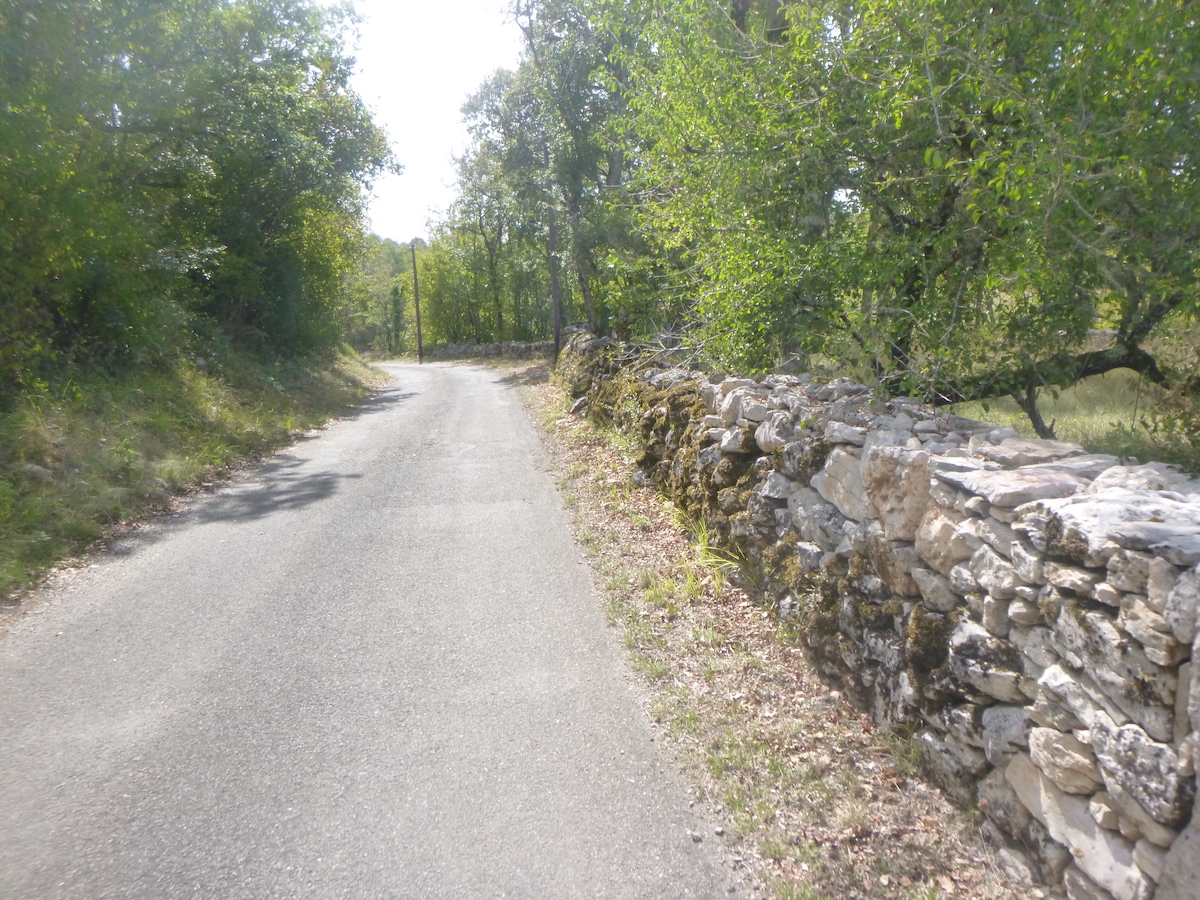 |
 |
 |
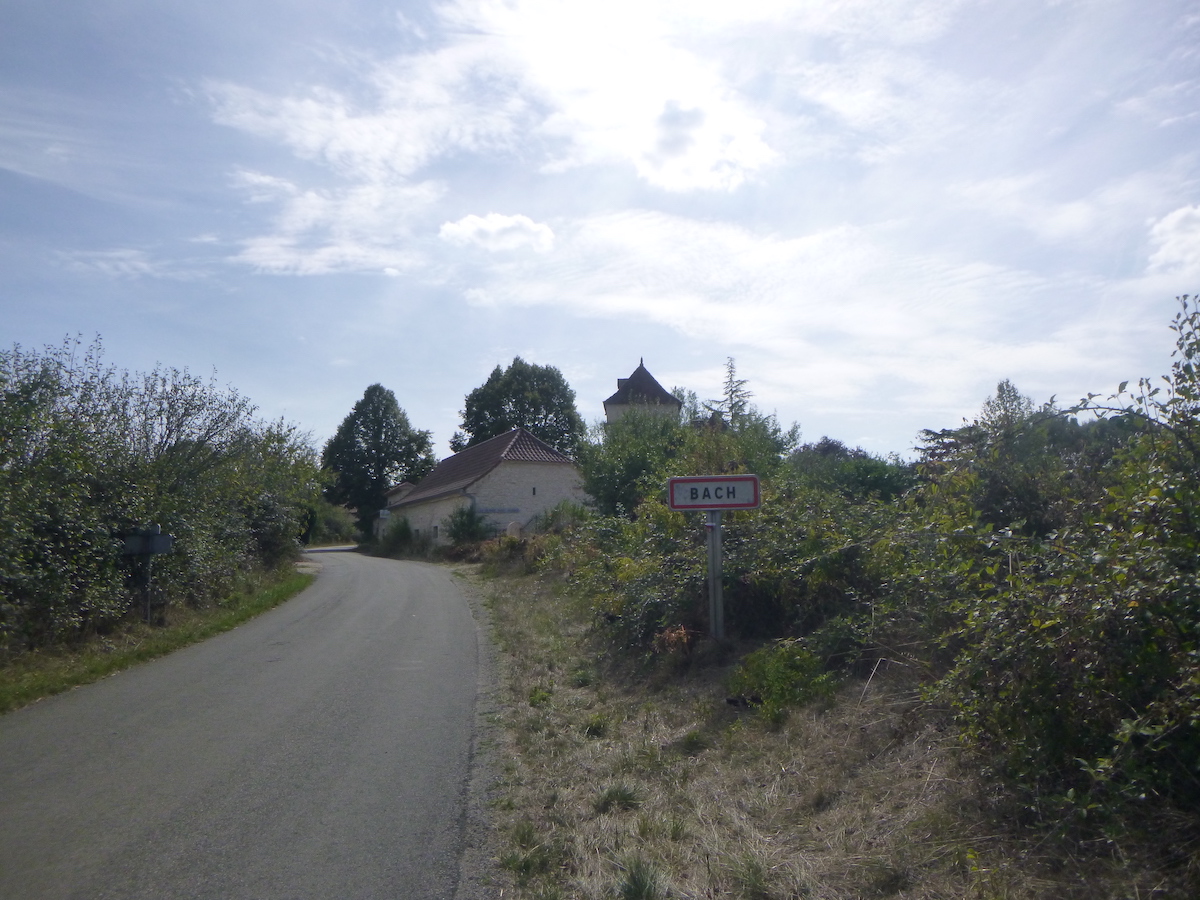 |
The road soon gets to Bach (150 inhabitants), a village made of solid stone houses.
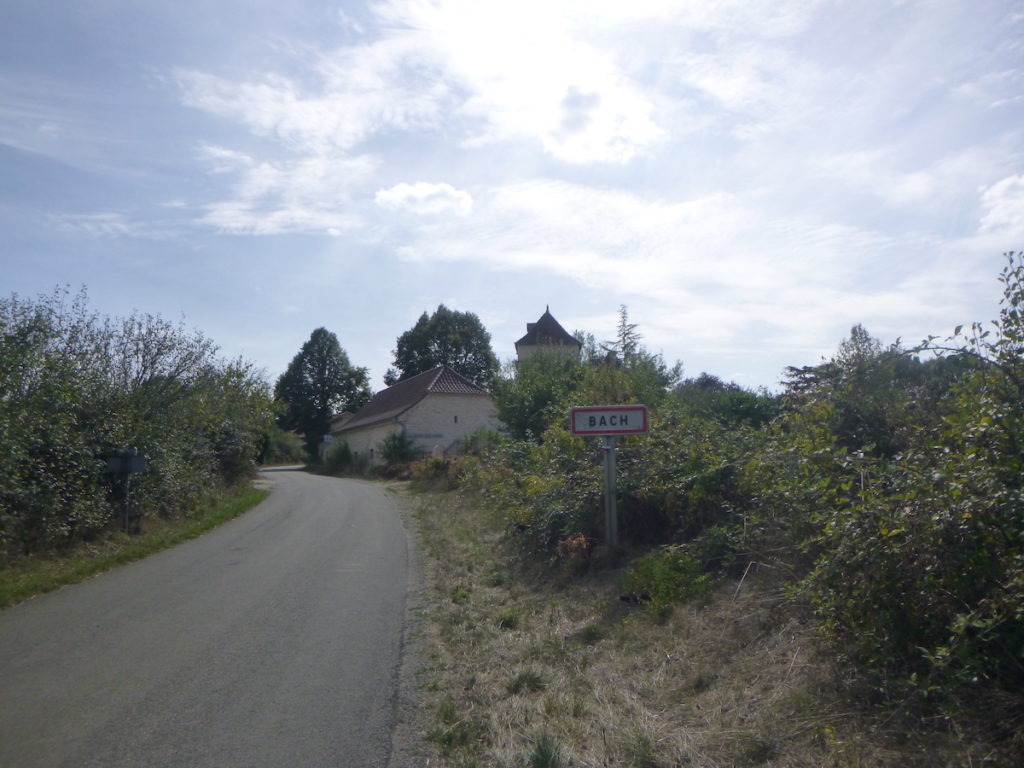
| These residences, which are the soul of the causses, breathe the past and the silence. | |
 |
 |
|
The Church of L’Assomption dates back to a 12th century building, of which almost nothing remains. It was rebuilt in the 15th and 6th centuries, then transformed in the 19th century. |
|
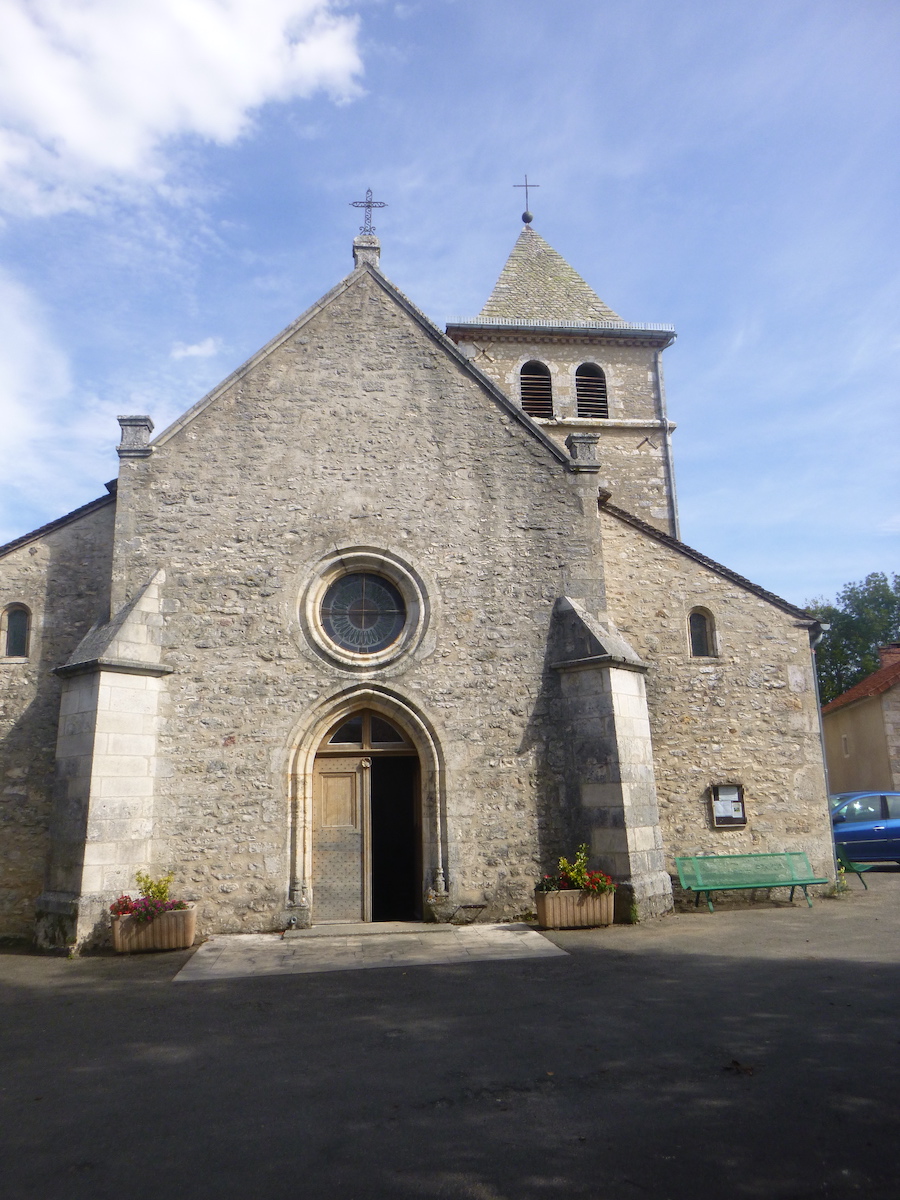 |
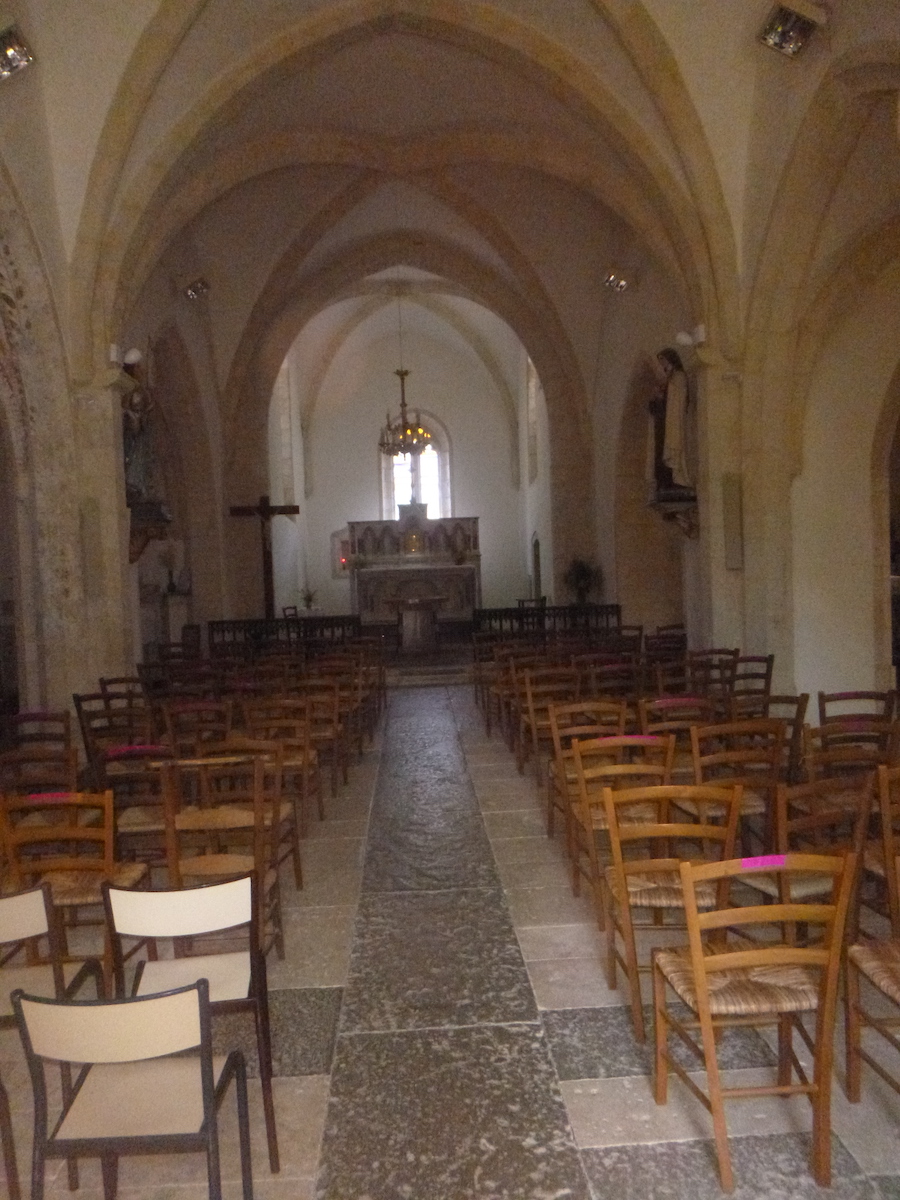 |
| On the Church Square, a sign explains the work that was carried out for the construction of two water points on the route to Cahors. The first is a stone’s throw from here, at the exit of the village. | |
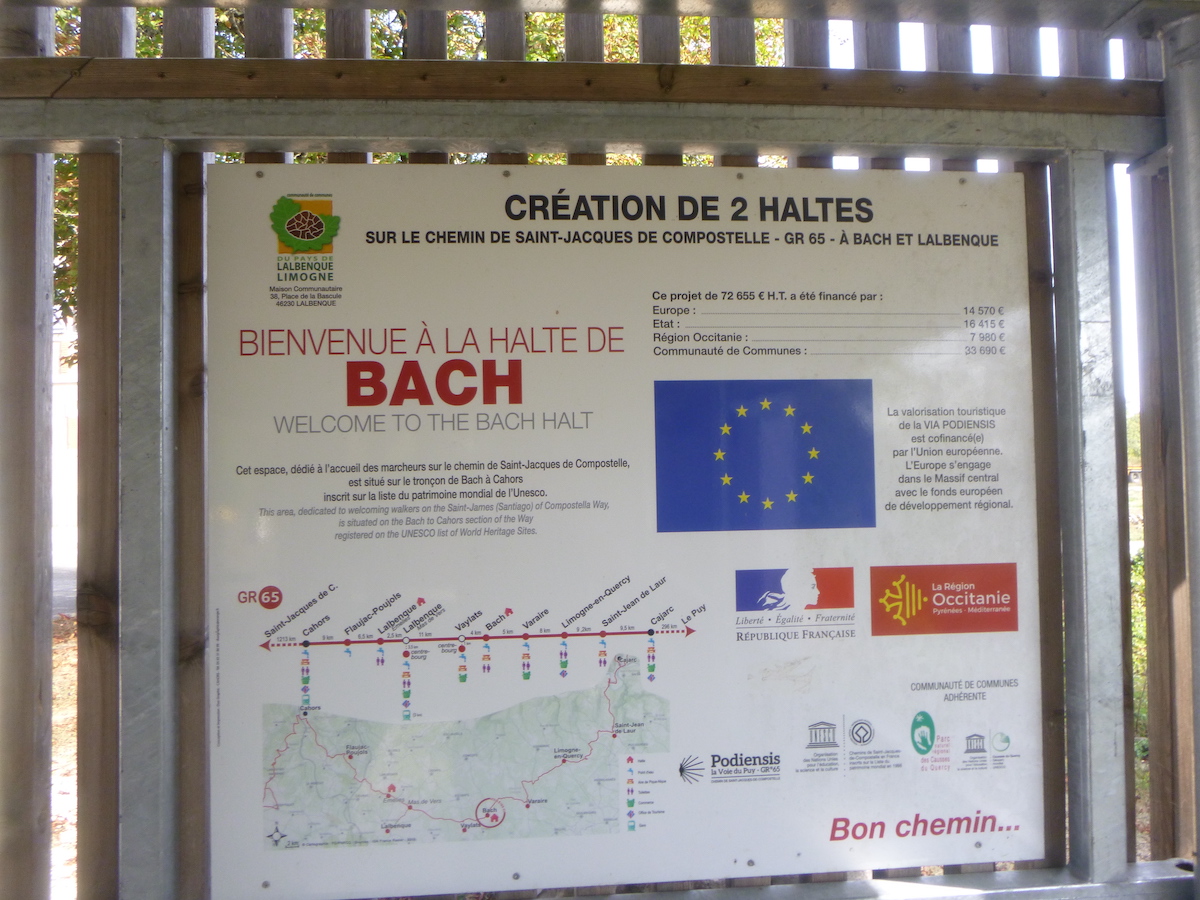 |
 |
|
The GR65 leaves the village by the road which heads towards Vaylats. |
|
 |
 |
 |
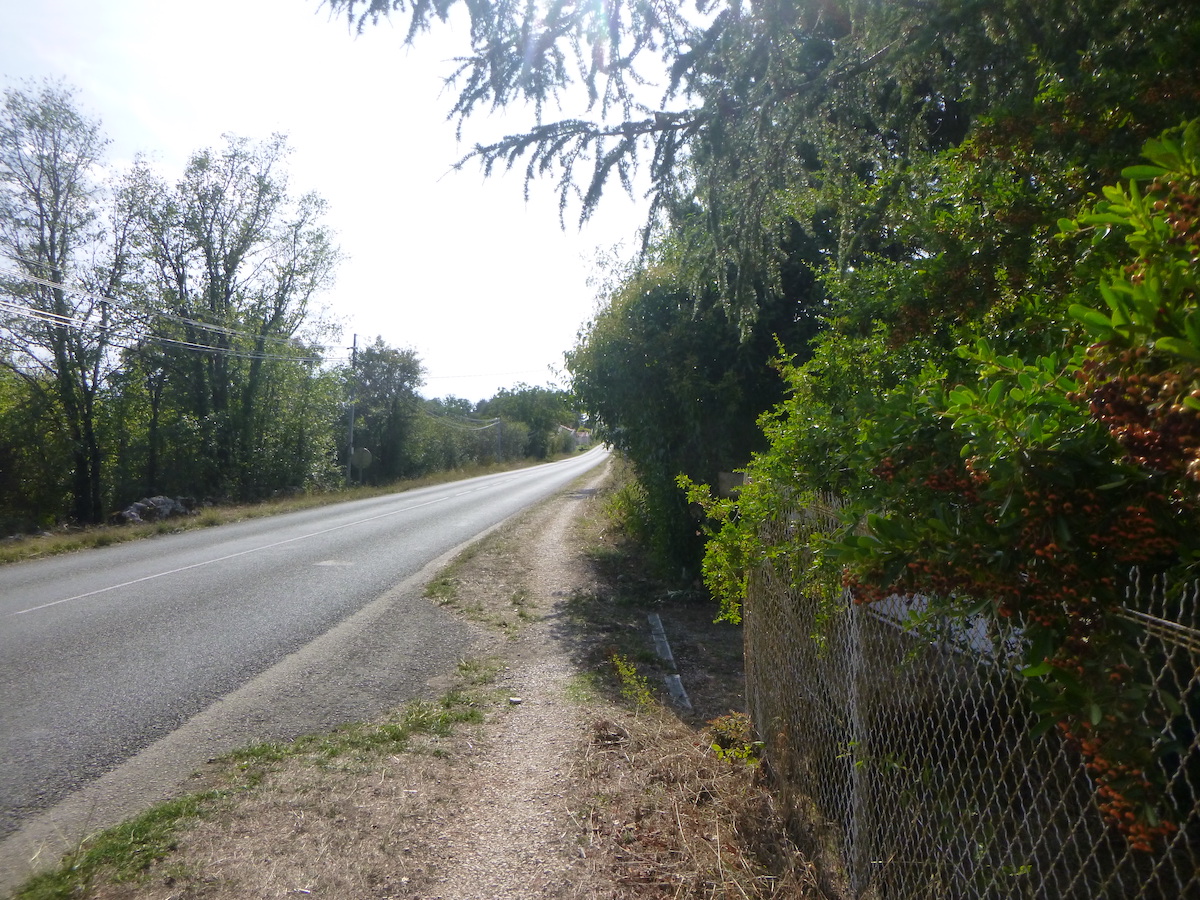 |
|
Shortly after, it leaves the road for a pathway towards Cahors and Vaylats. People quickly points out the possibility of accommodation in Vaylats or in the Bascot yurts, fairly recent accommodation on the route. |
|
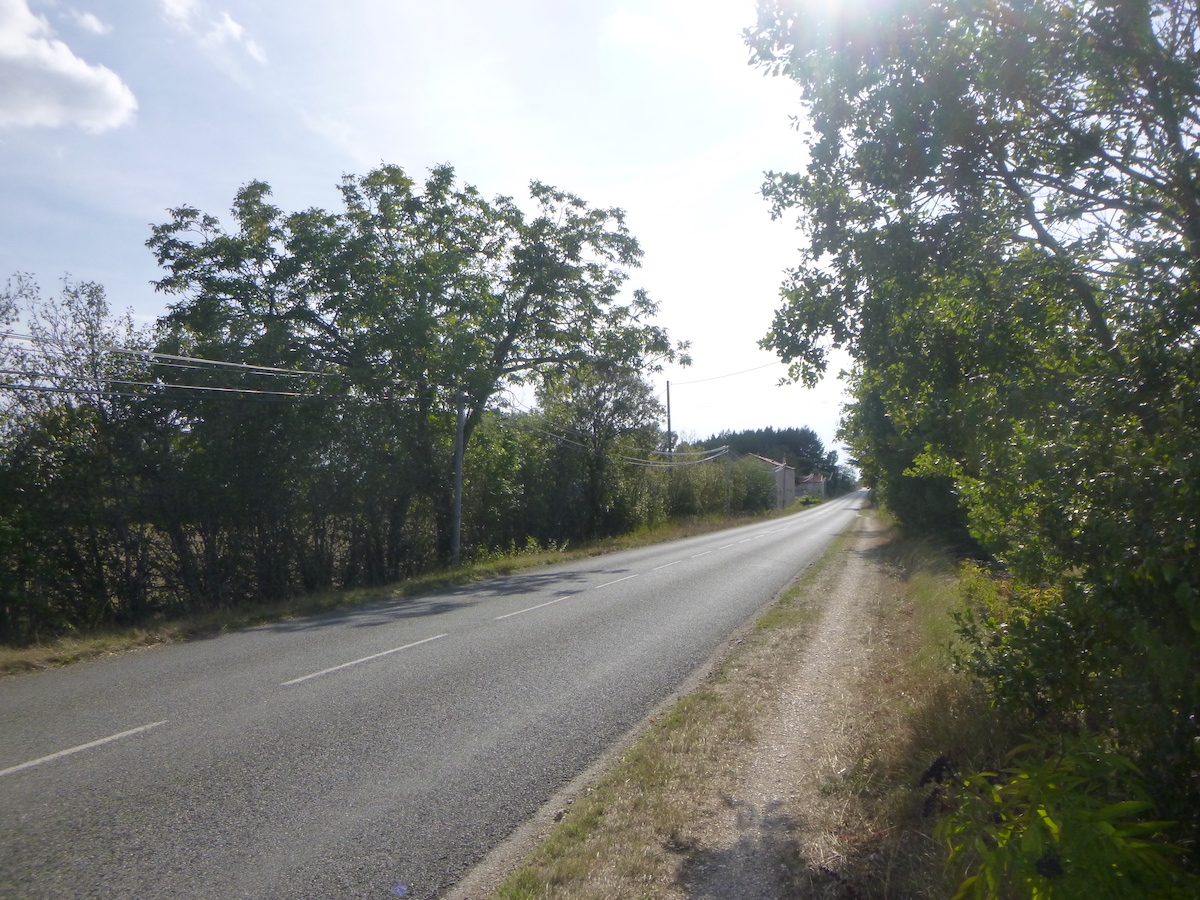 |
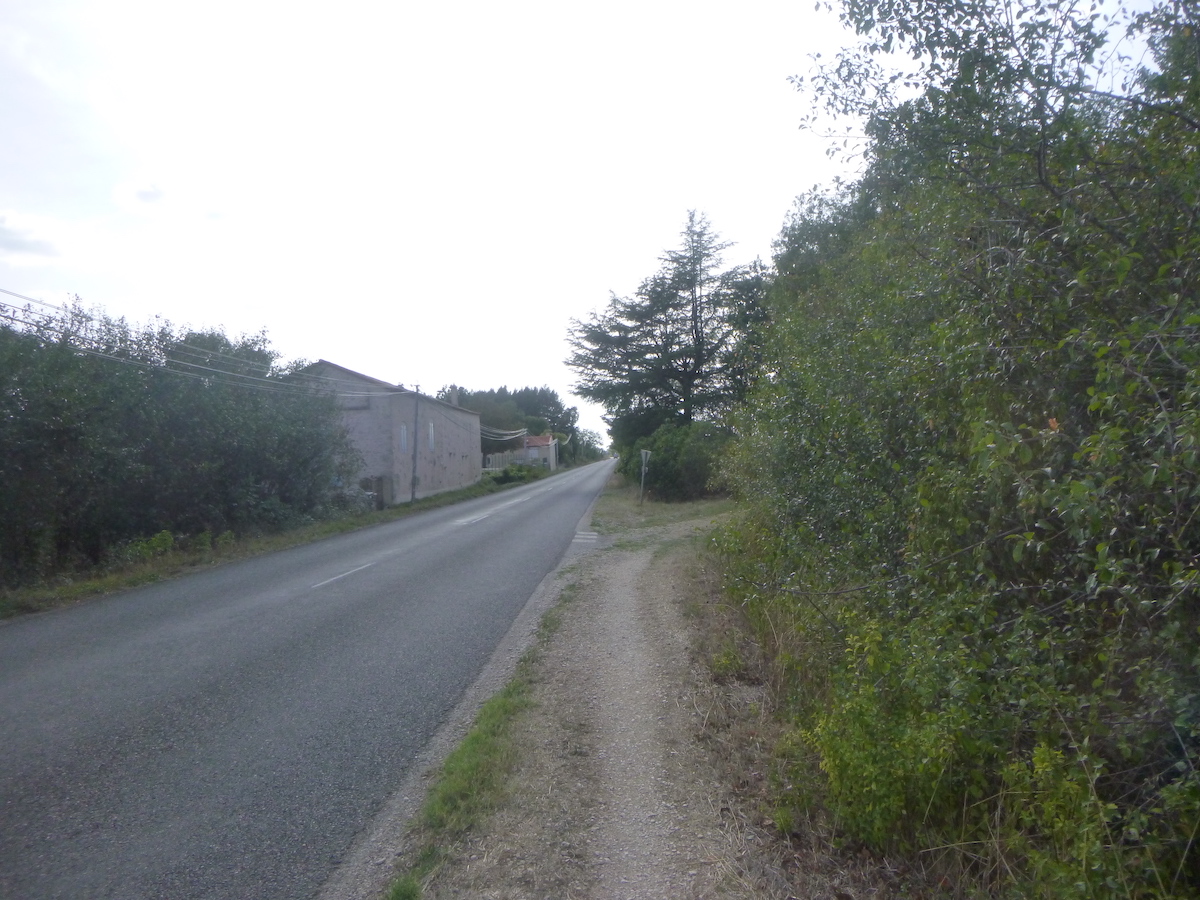 |

|
Here is the Cami Ferrat, the track of Caesar and the Roman armies towards Cahors on the GR65. |
|
 |
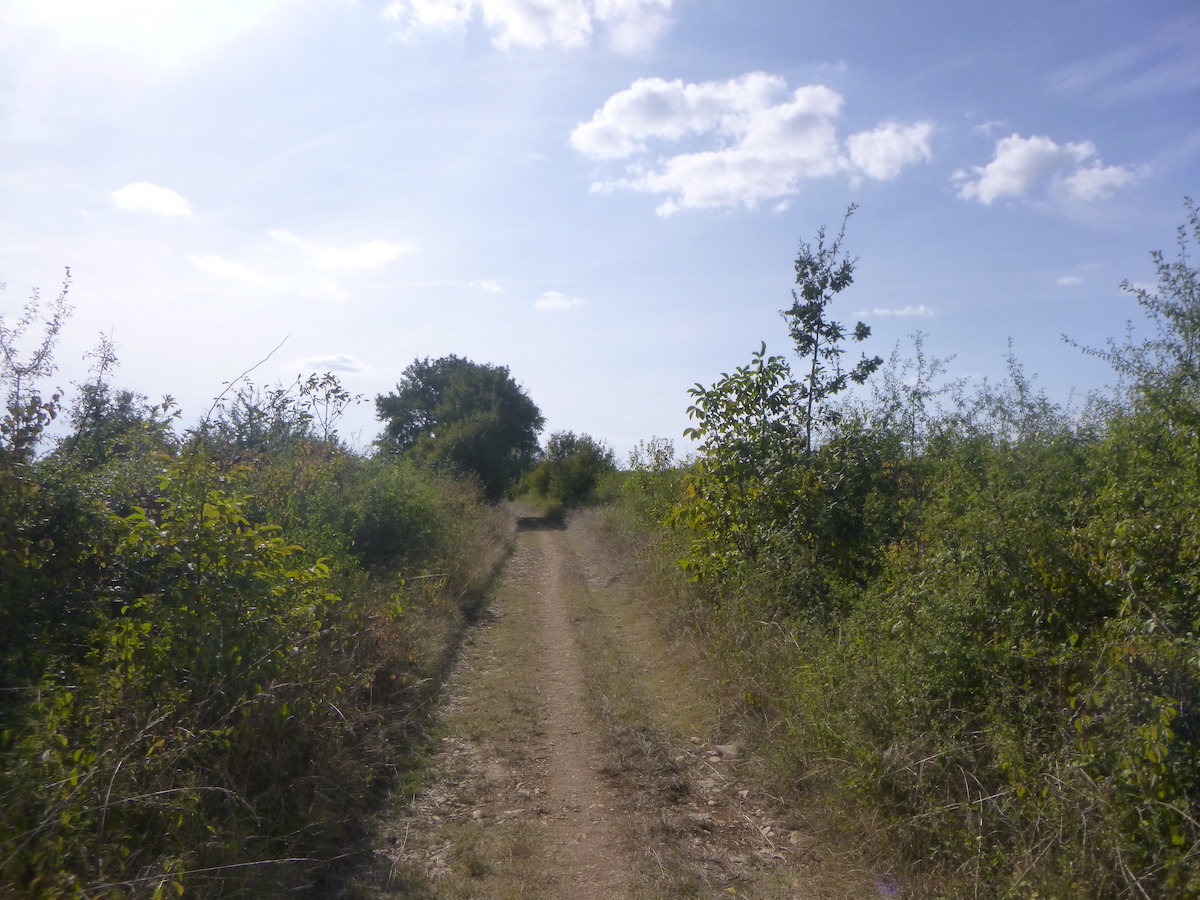 |
|
The landscape here is not the most beautiful on the causse. These are very long stretches on a plain that resembles a steppe. |
|
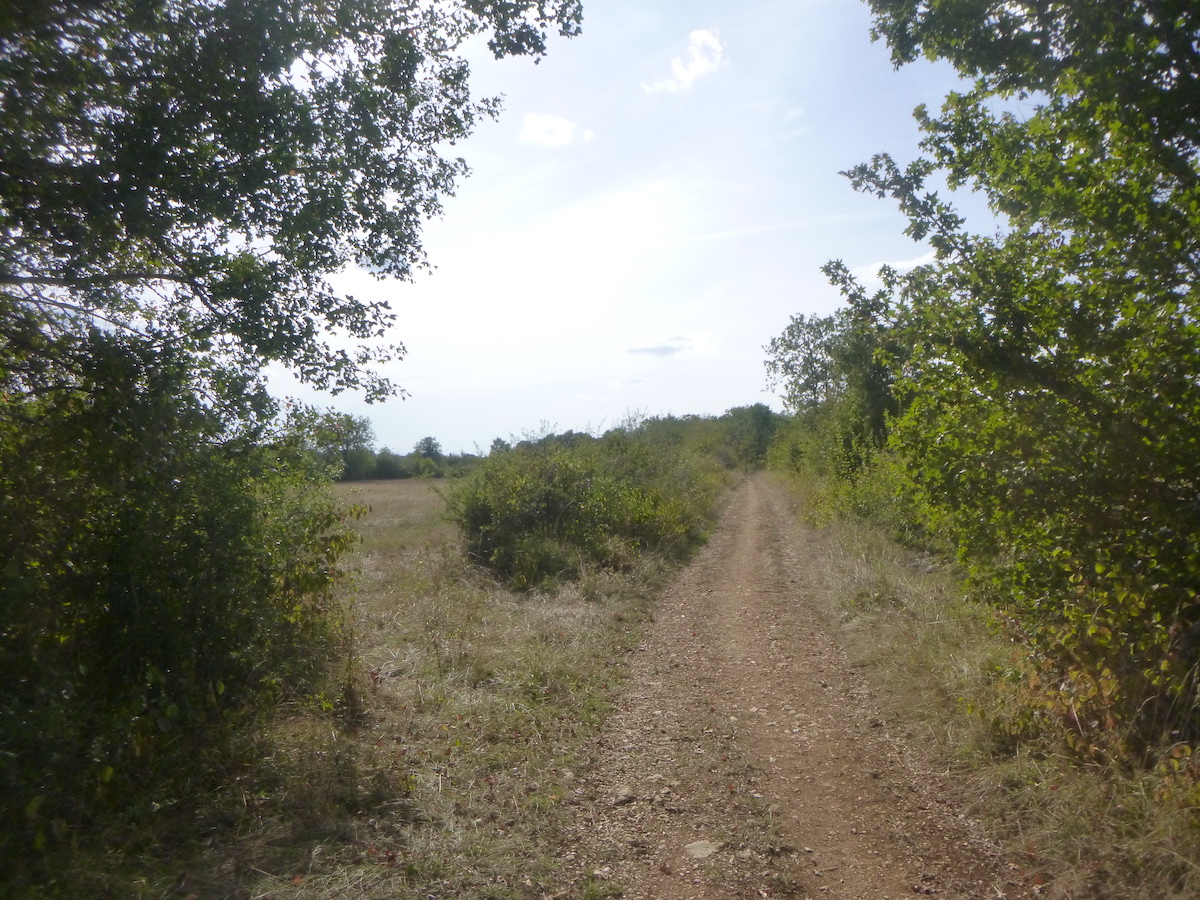 |
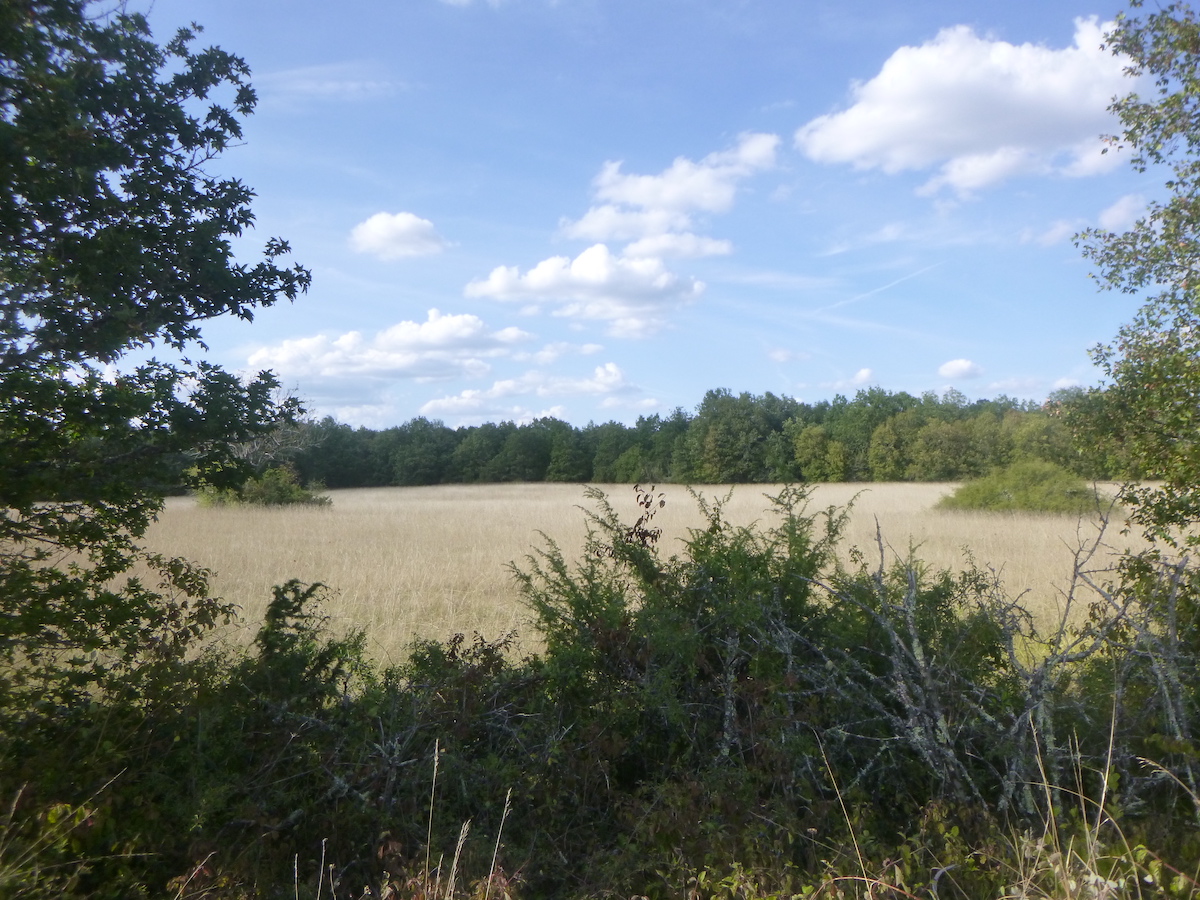 |
|
Further on, nature becomes more charming again when the pathway approaches the forest. |
|
 |
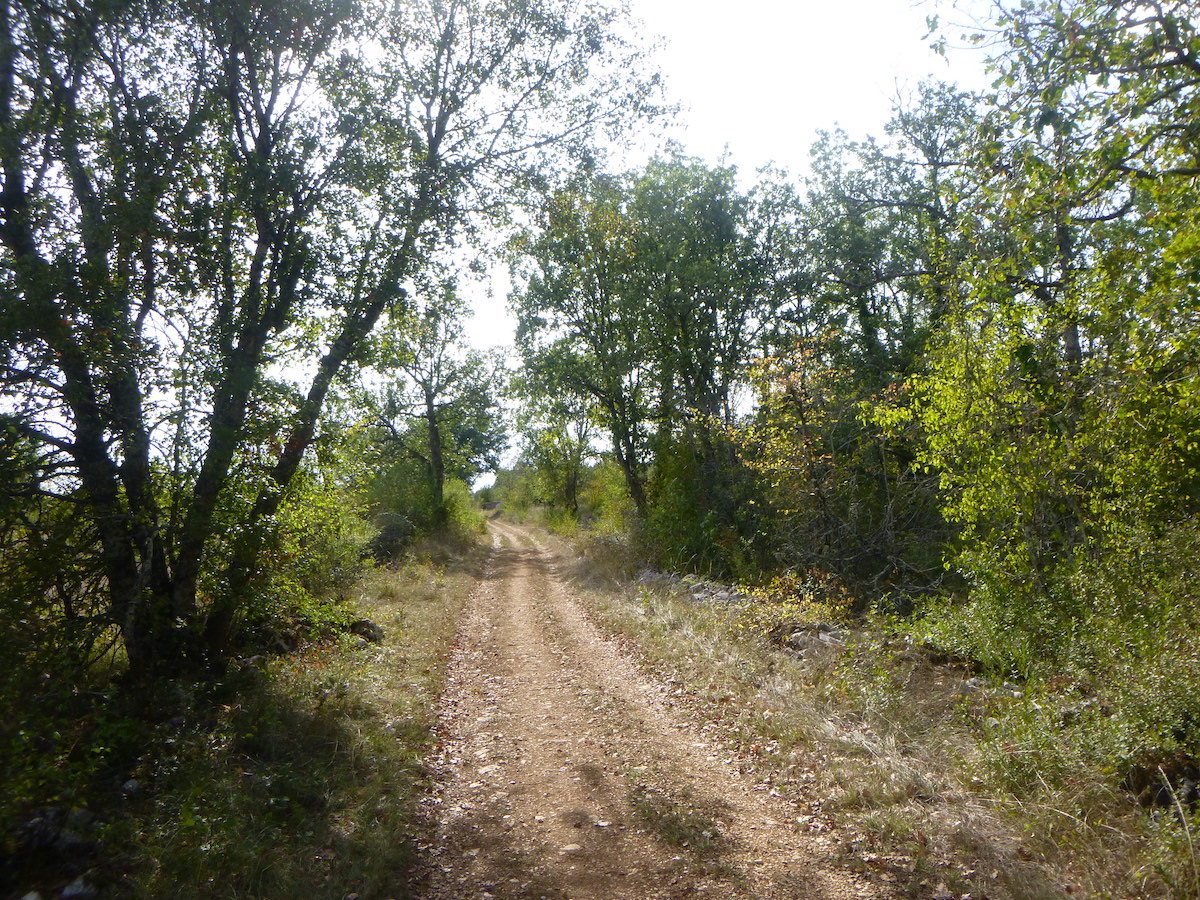 |
|
The pathway soon arrives at a crossroads which allows you to reach Vaylats. The GR65 goes straight on to the Cami ferrat. You will meet it back the next day at the exit of Vaylats. |
|
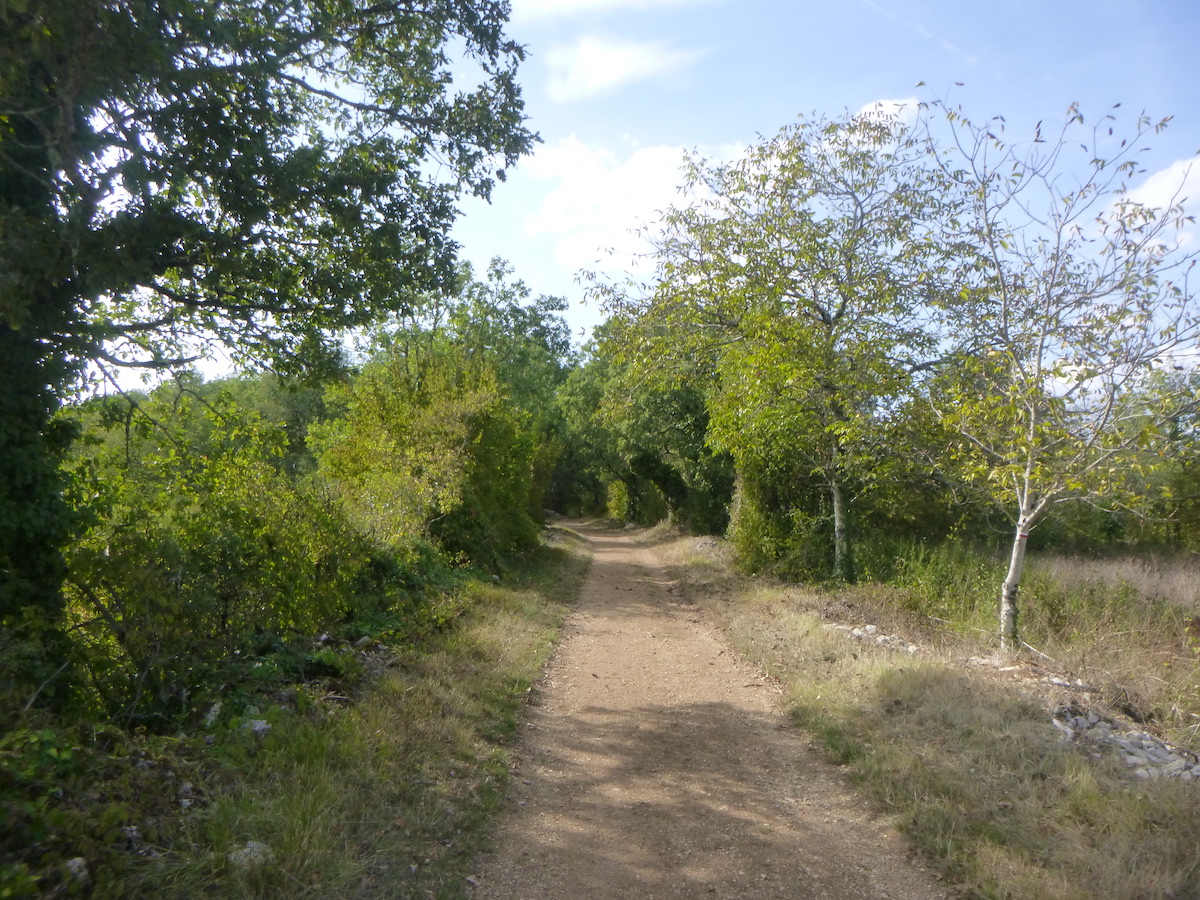 |
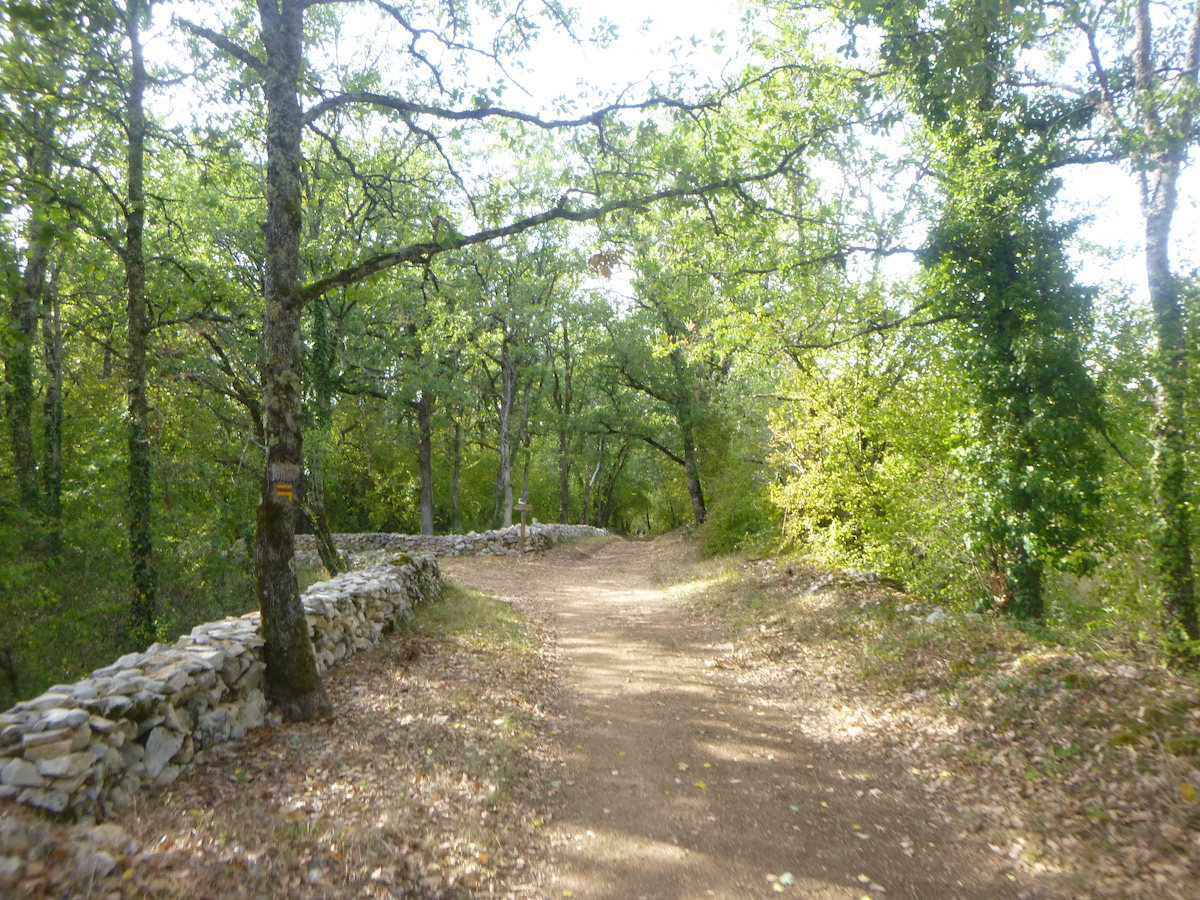 |

|
The shortcut takes the wood a little… |
|
 |
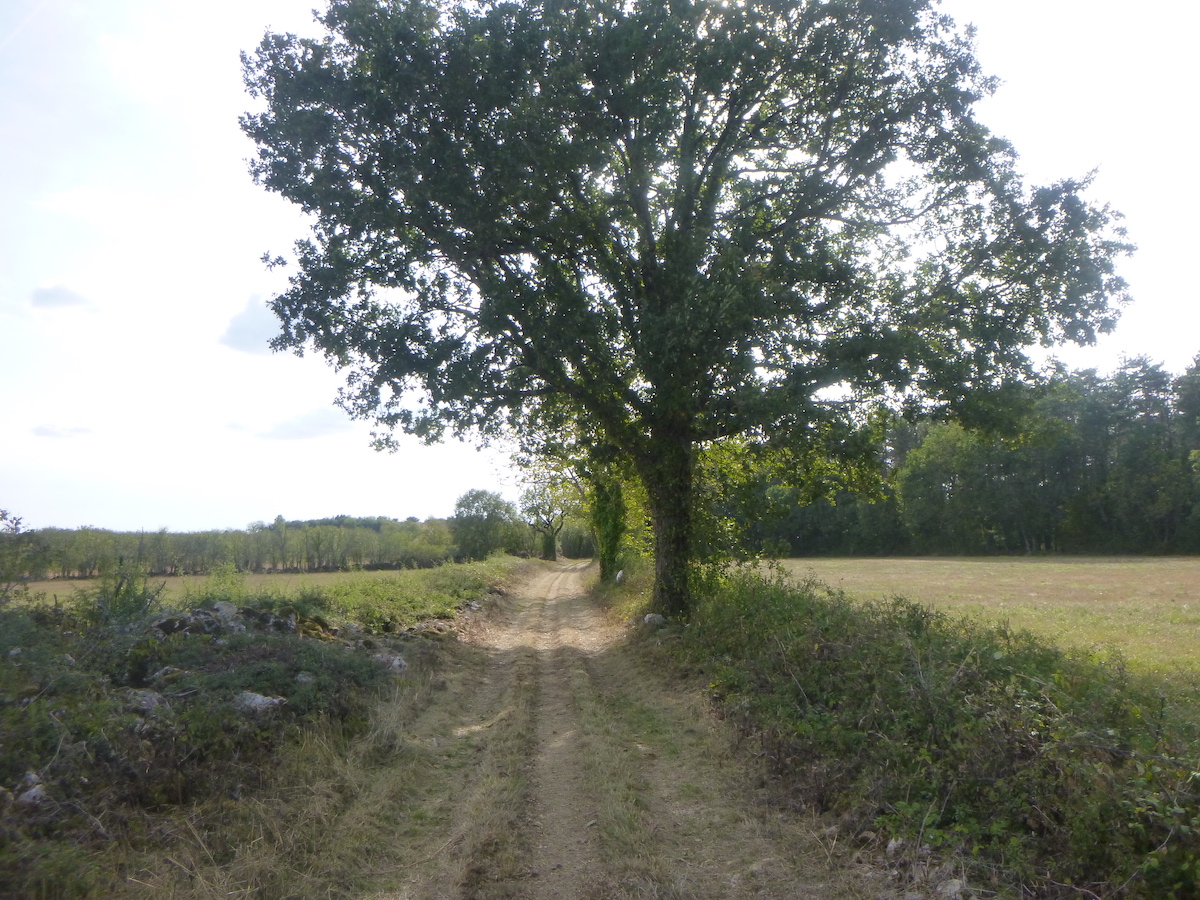 |
|
…before returning to the broad Vaylats plain. |
|
 |
 |
|
The land is undoubtedly a little less harsh here, because there are some crops. |
|
 |
 |
|
The wide pathway continues like this, until you find a narrow pathway at the entrance to Vaylats. |
|
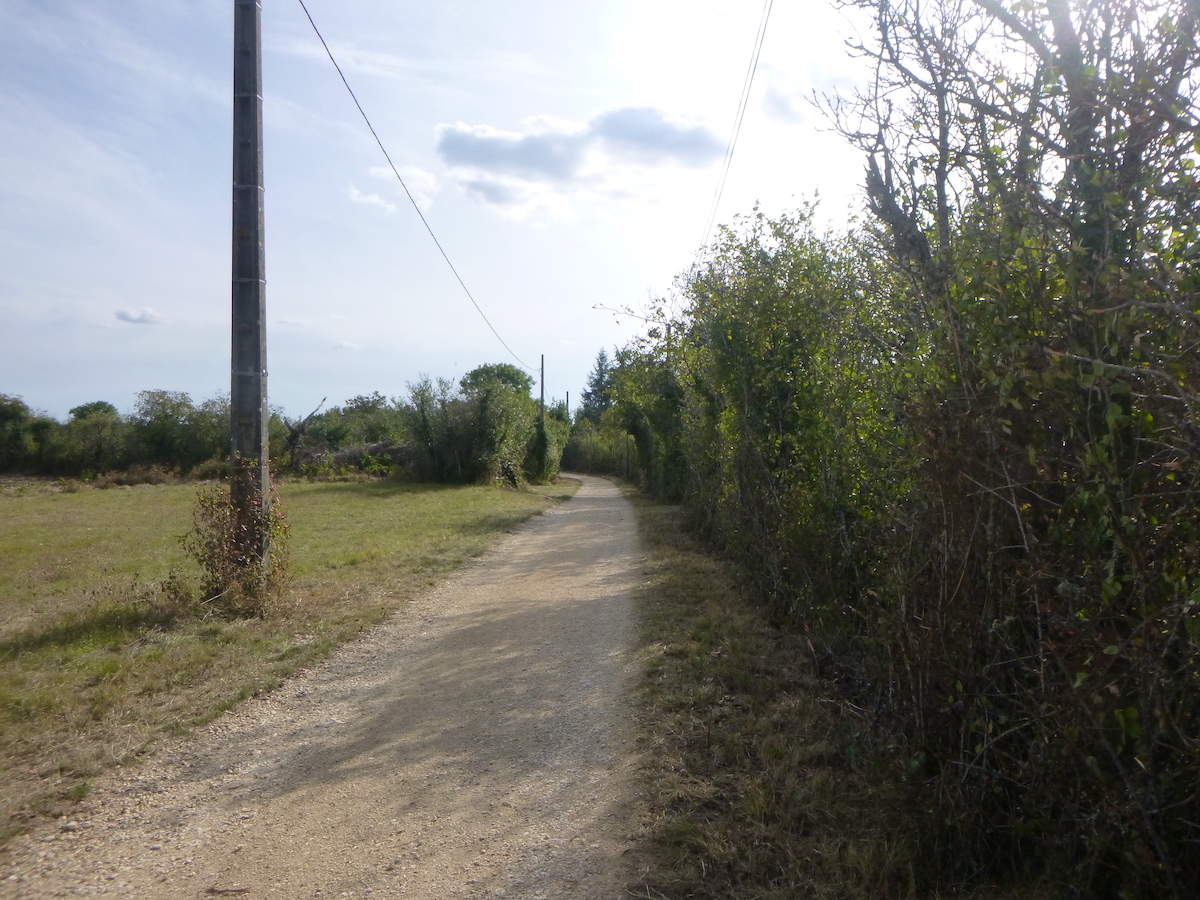 |
 |
 |
 |
|
The shortcut leads to the entrance to the village. |
|
 |
 |
|
There is a wooded park in the middle of the village. The current church of St Pierre es Liens, in neo-Romanesque style, is a reconstruction from the end of the 19th century. It replaces, on the same site, a Gothic church from the end of the 15th century. |
|
 |
 |
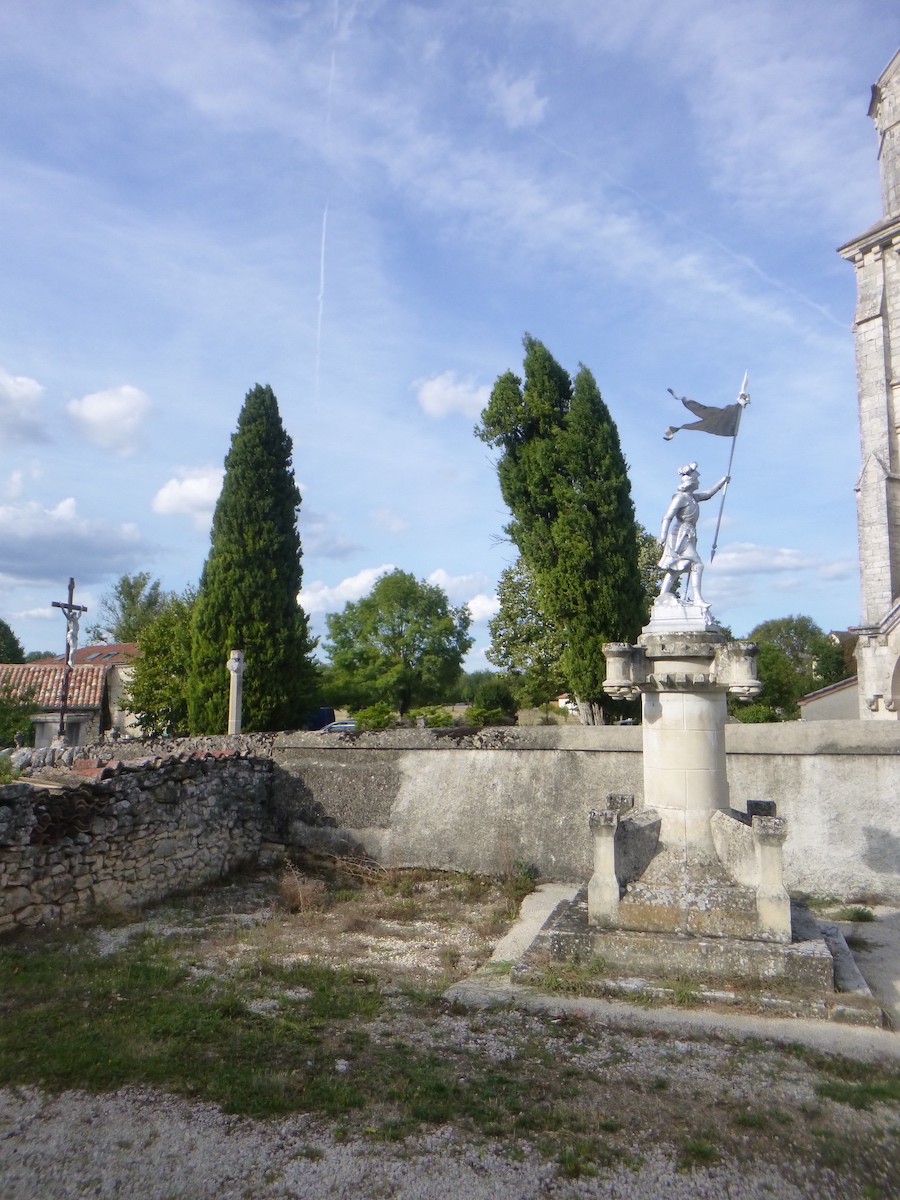 |
 |
|
There is also a bakery-grocery store-café, but above all a huge and splendid convent built at the end of the 19th century, on the site of an old castle destroyed during the revolution. This is the magnificent Convent of the Daughters of Jesus, which also serves as accommodation. |
|
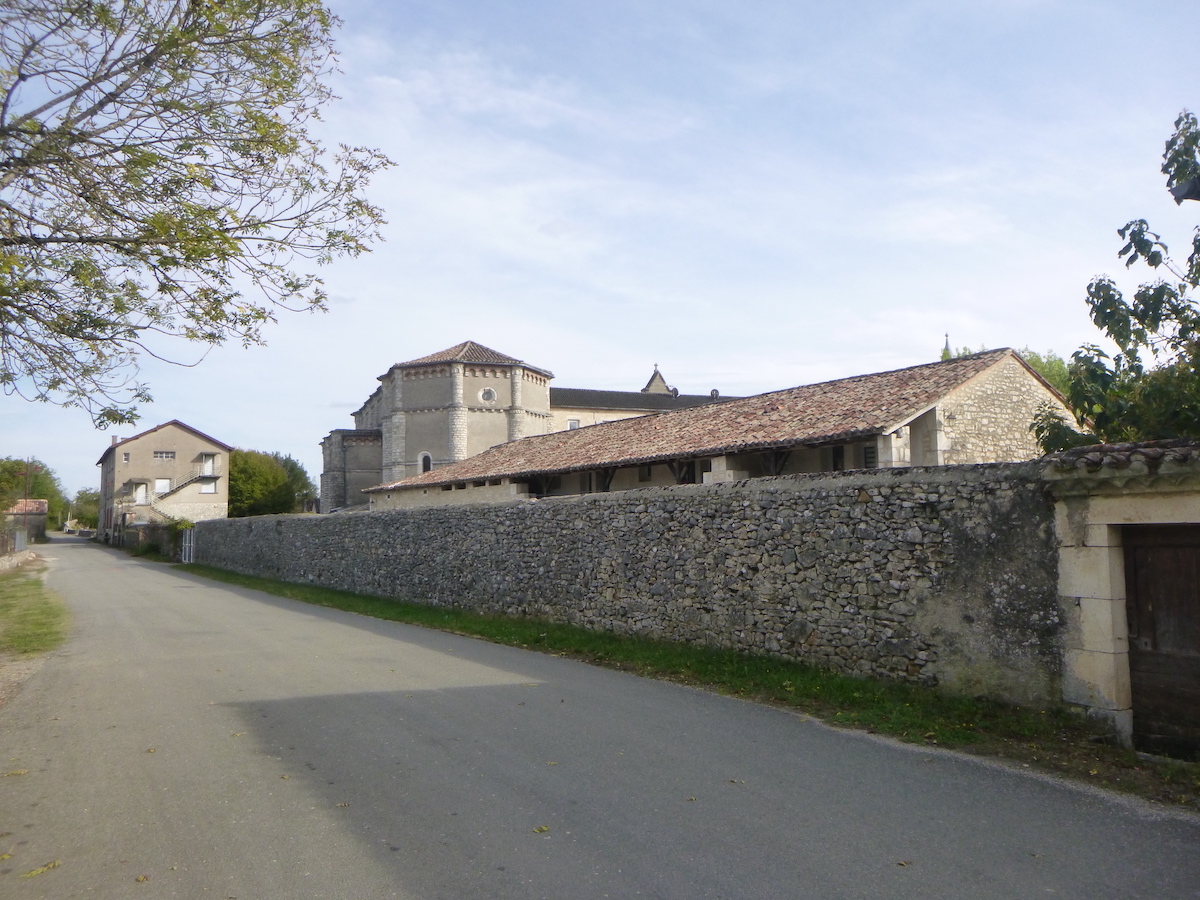 |
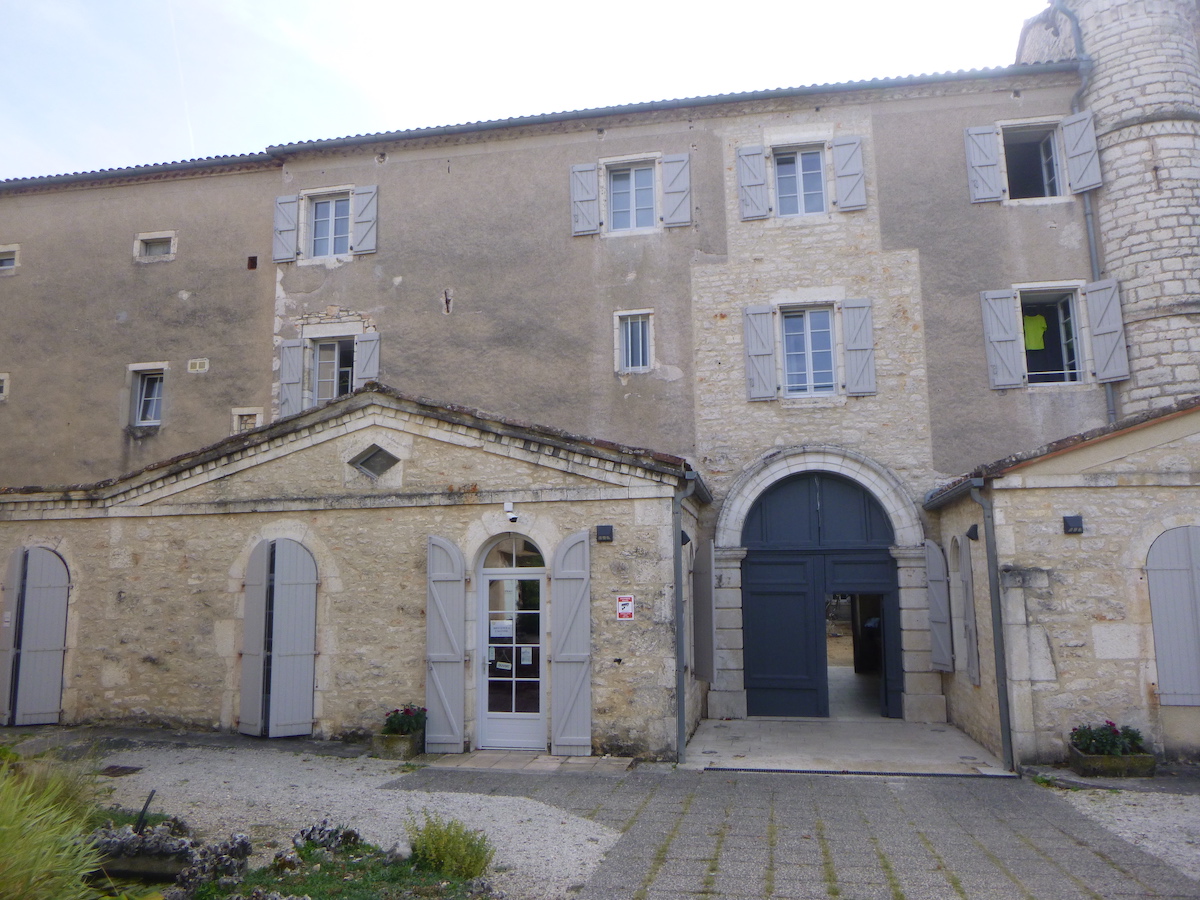 |
In 1820, Father Jean Lausiu, priest in Vaylats, founded a community and a school for the education of girls and the care of the poor. This was the origin of the congregation of the Daughters of Jesus, a congregation which numbered up to 600 nuns in the 20th century. Today, the sisters are mainly present in the southwest of France. In Vaylats, they are elderly, retired sisters. They are helped by lay people who share their charisma. The sisters no longer take care of the pilgrims. Inside the convent, a large tree-lined courtyard leads to the chapels, the refectory or the sisters’ apartments.
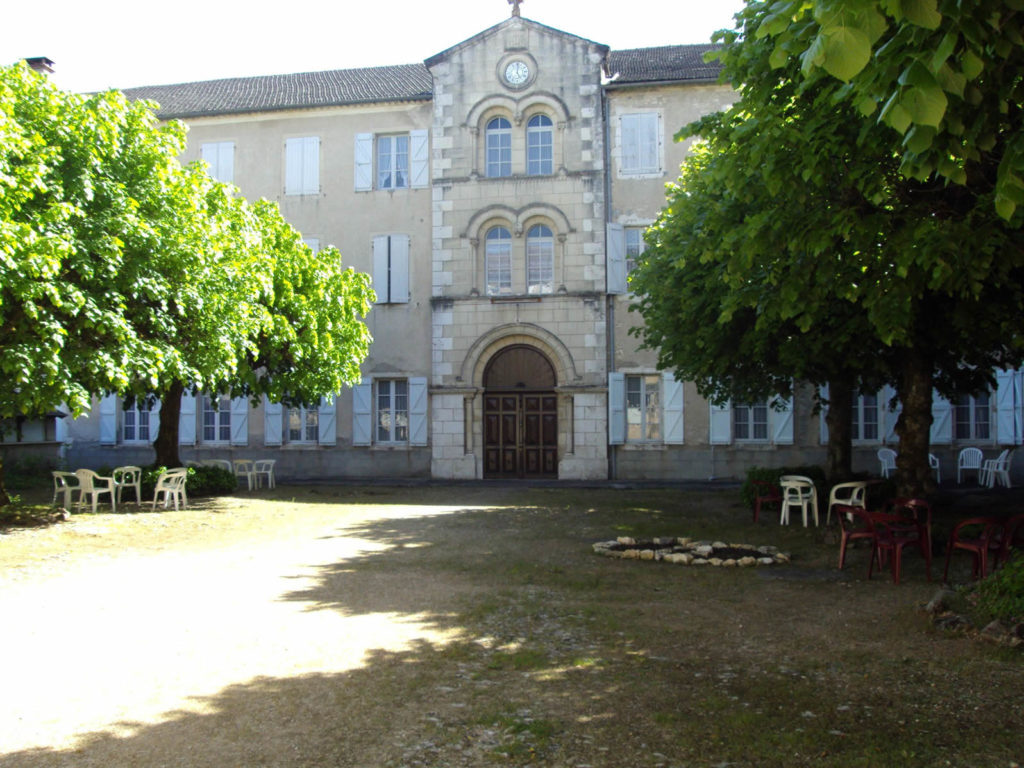
Local gastronomy
At the Couvent de Vaylats, you will not be served the very famous “black diamond” that we taste in the Lot and Périgord. The truffle is one of the precious jewels of French gastronomy. / The truffle is underground and lives in close relationship with the roots of oaks, sometimes hazelnut trees. It is born at the beginning of spring, but it is only 7 to 10 months later that it reaches maturity. It grows 0 to 20 cm deep around trees. How do you tell if there are truffles? By the presence of a “burn”, i.e. an area in which vegetation grows with difficulty. By observing the flies that hover above the mushroom, as if intoxicated and almost motionless, to lay their eggs there. But, it is better to have a pig or a truffle dog to unearth these precious treasures. /In Limogne, there are two large truffle markets: Limogne-en-Quercy and its big competitor Lalbenque, right next door. It is the great local tradition. Truffles are sold by the basket. On January 21, 2014, at the Limogne-en-Quercy market, 19 baskets were sold for a total of 9 kg of truffles. The price: between 300 and 500 euros per kilo. A trifle, indeed! But it’s even more expensive. In recent years, Alba white truffles sold at 375 Euros per 100 grams, 10 times more expensive than Quercy black truffles.
Lodging


 |
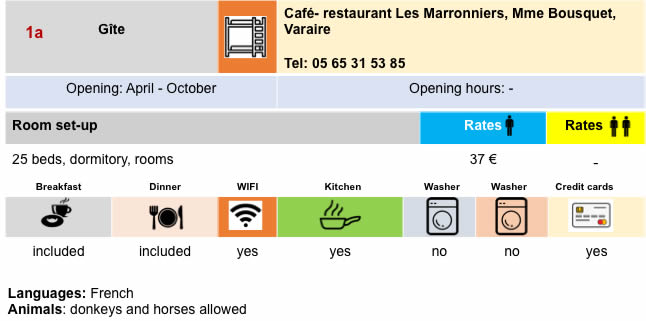 |
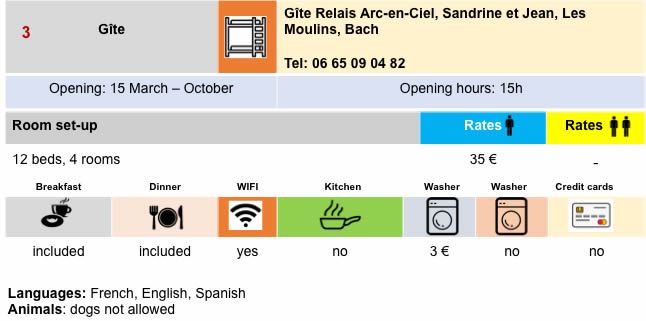 |
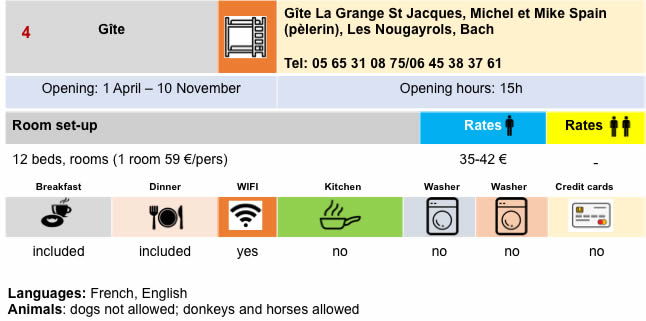 |
 |
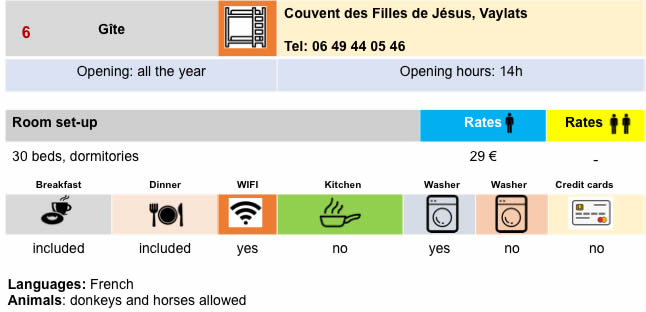 |
 |
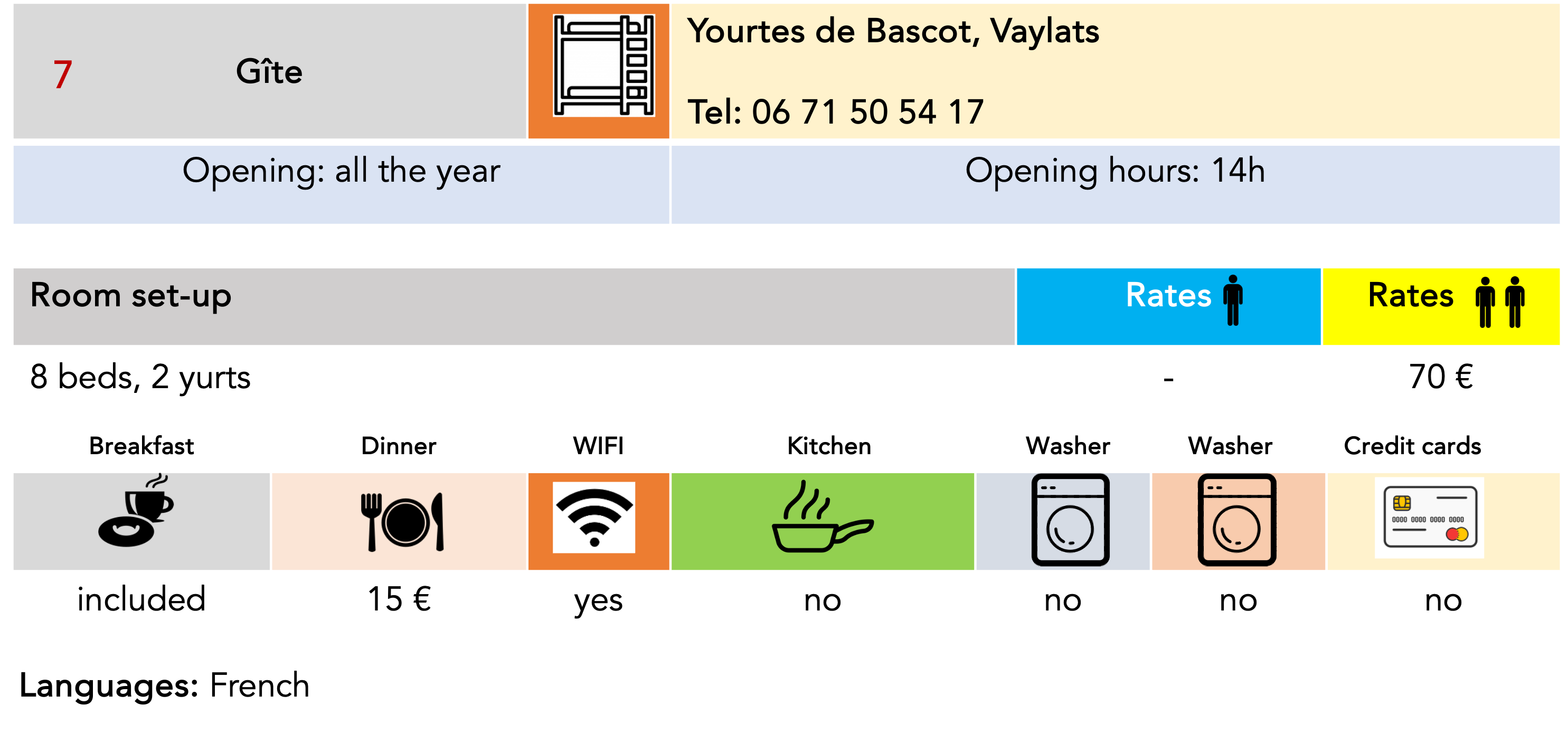 |
Feel free to add comments. This is often how you move up the Google hierarchy, and how more pilgrims will have access to the site.
 |
Next stage : Stage 16: From Vaylats to Cahors |
 |
Back to menu |
